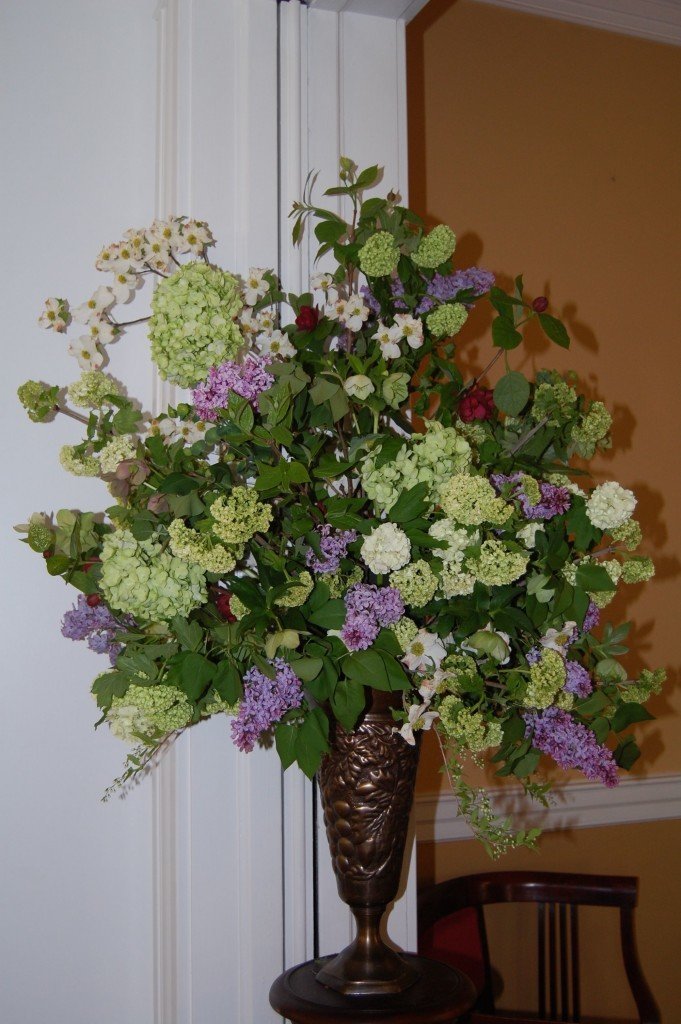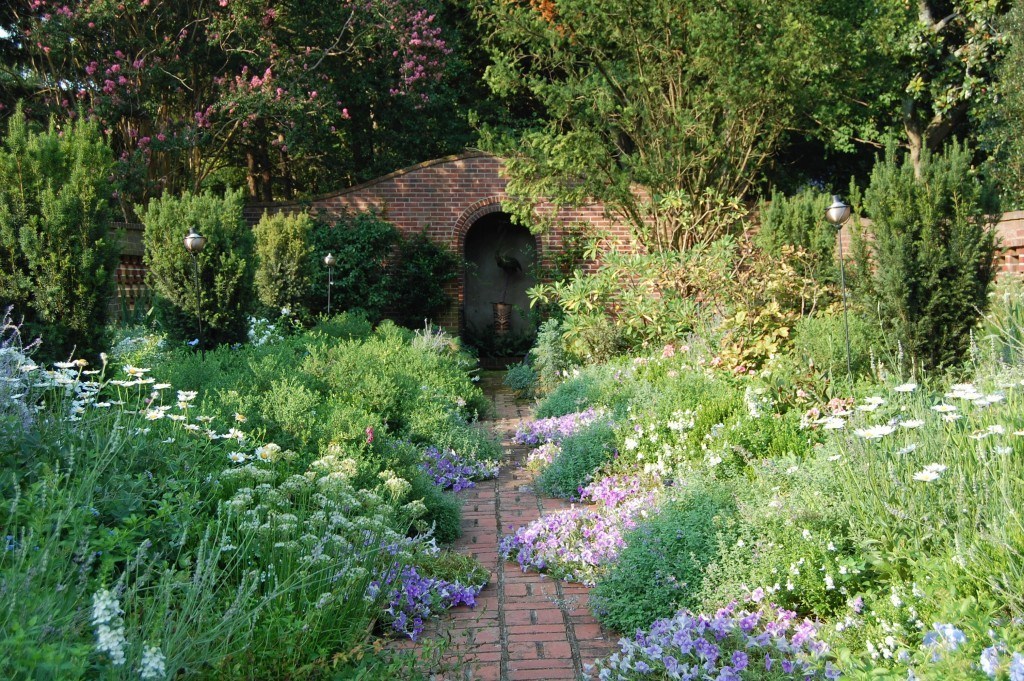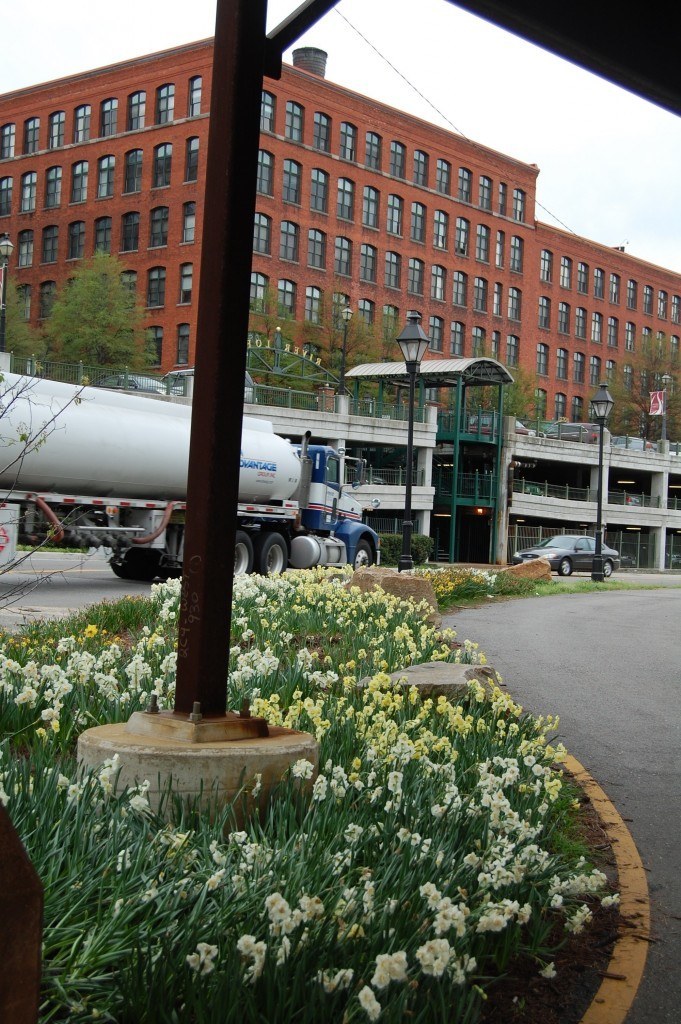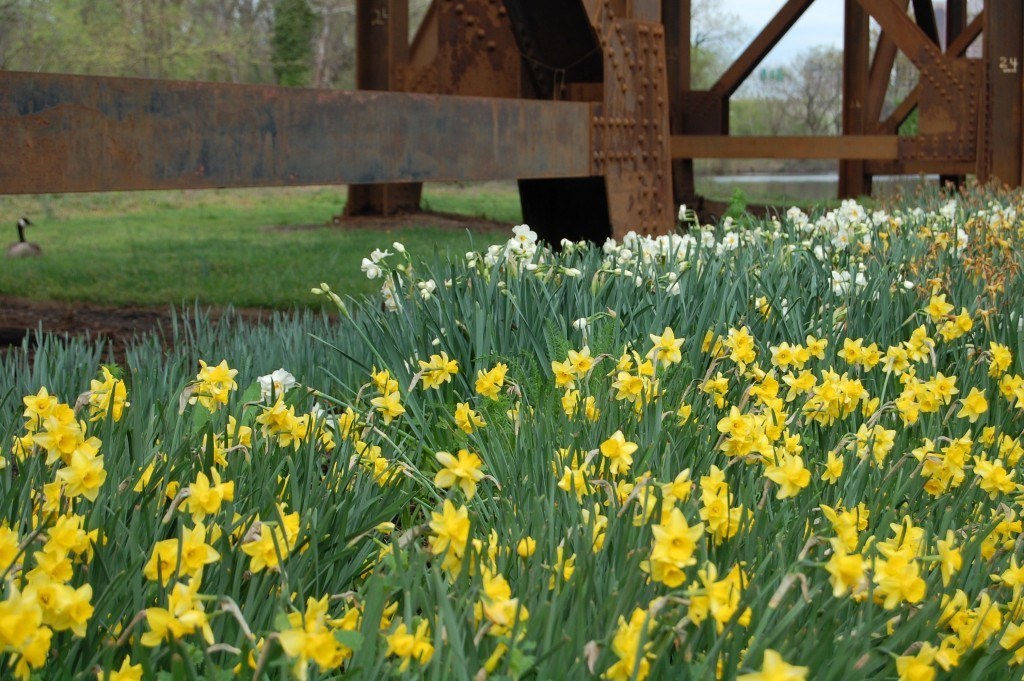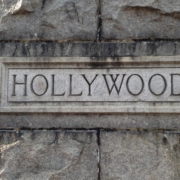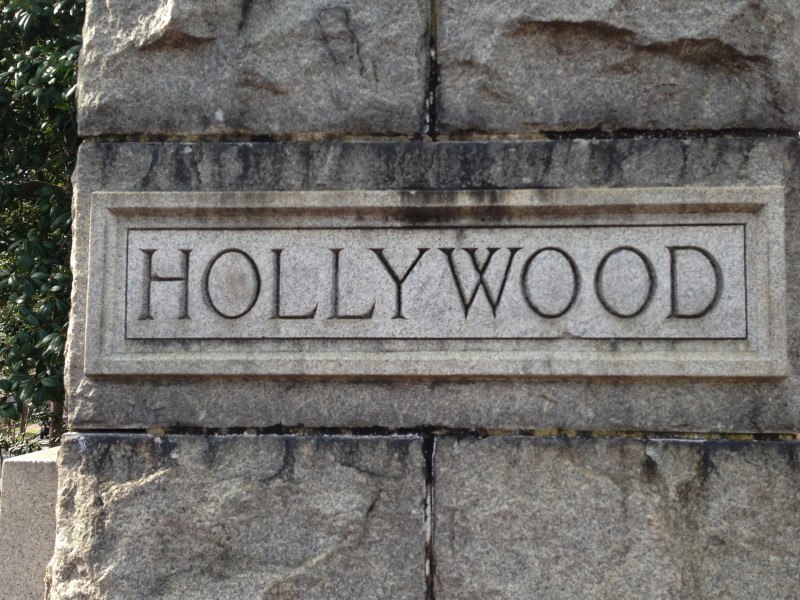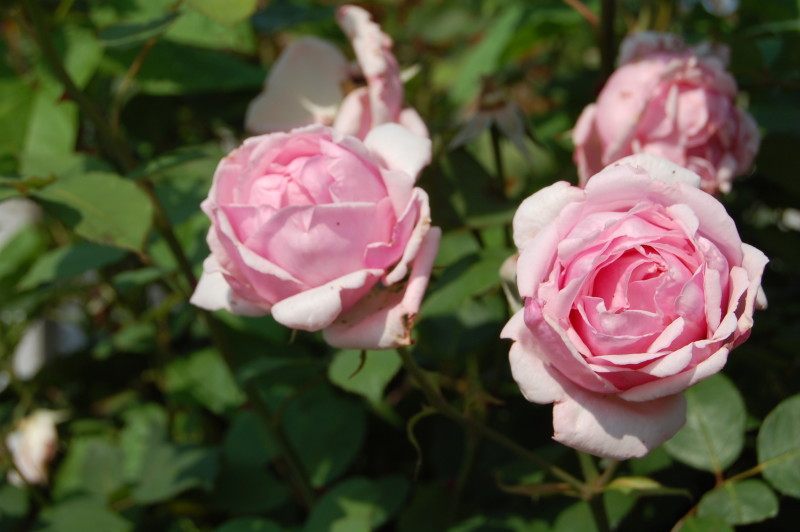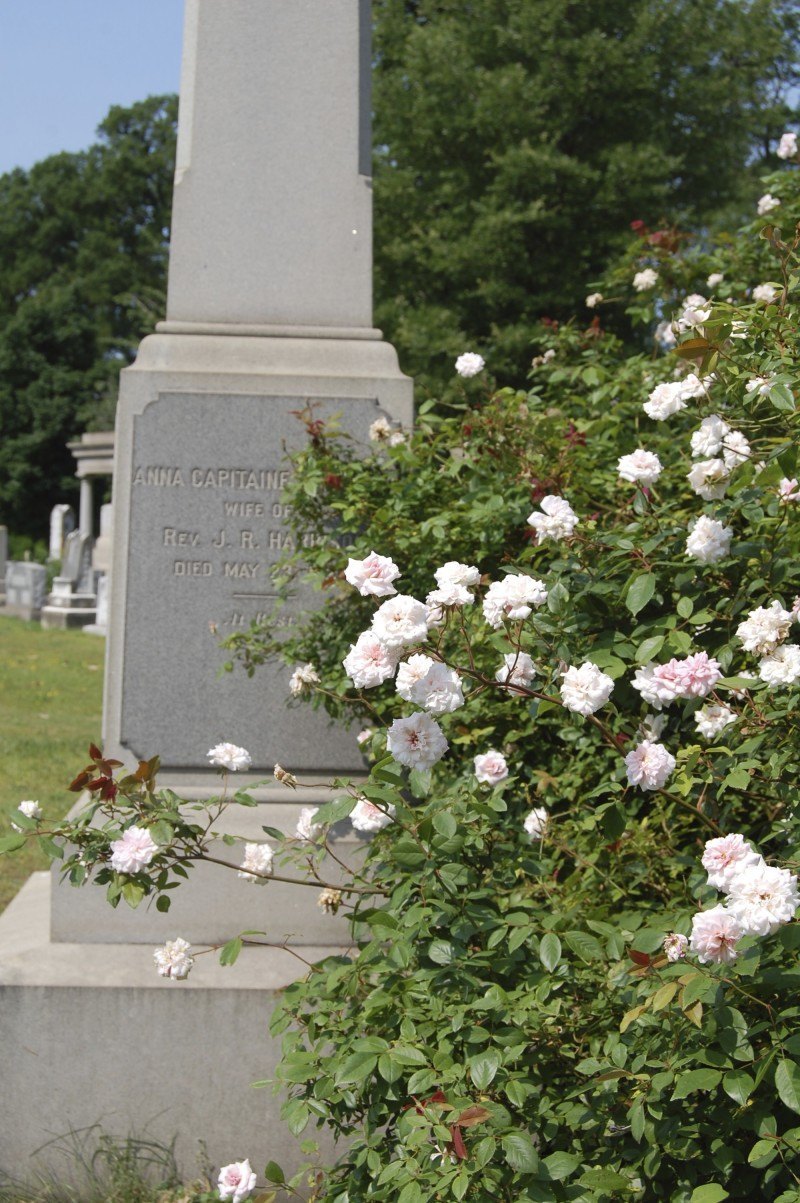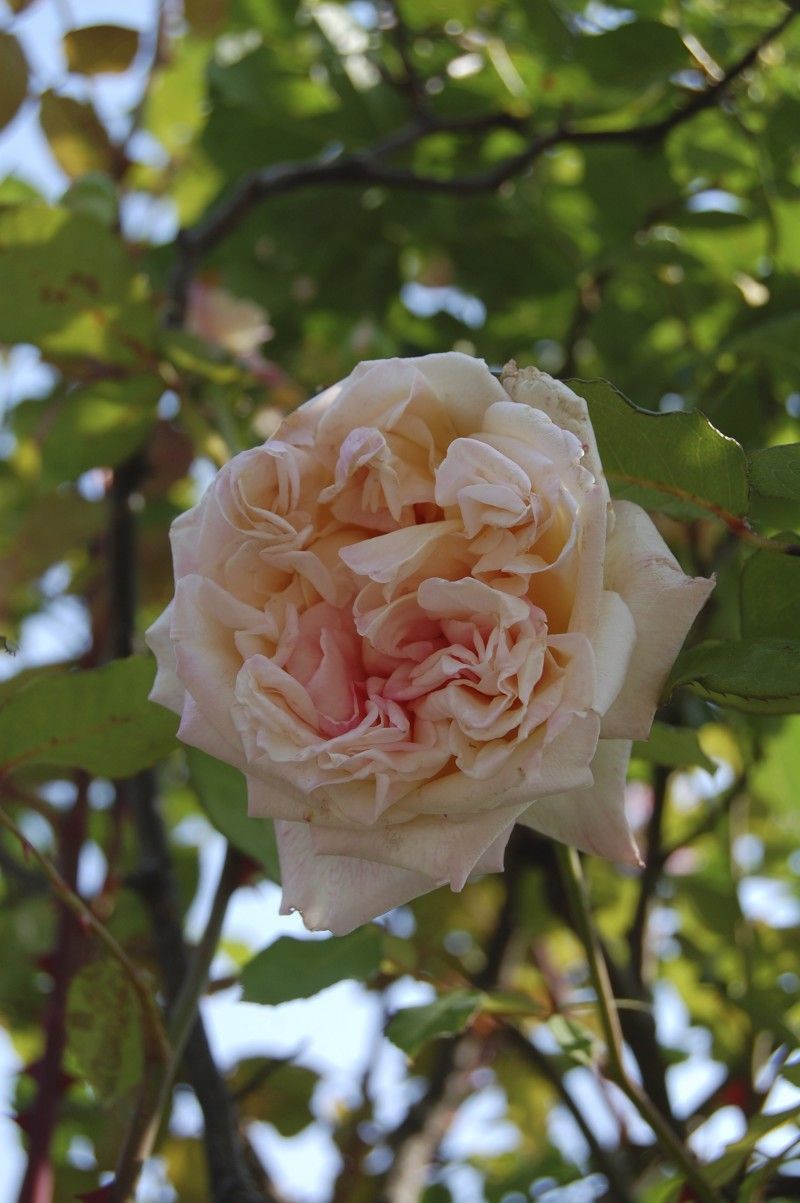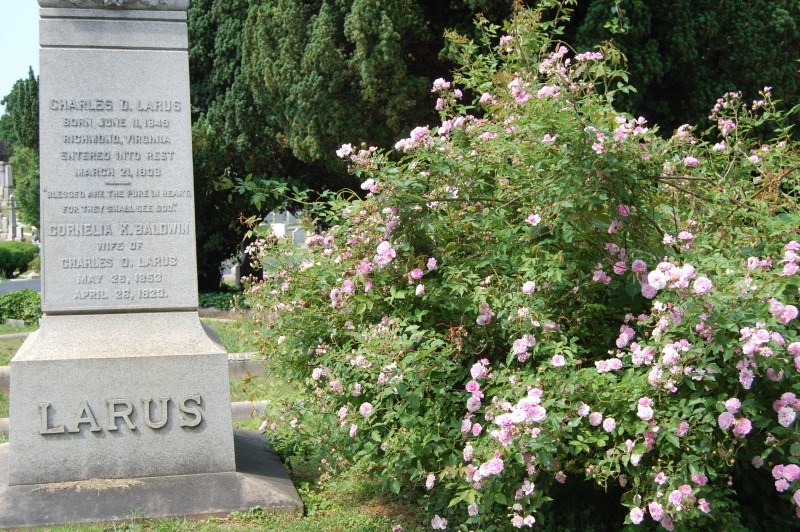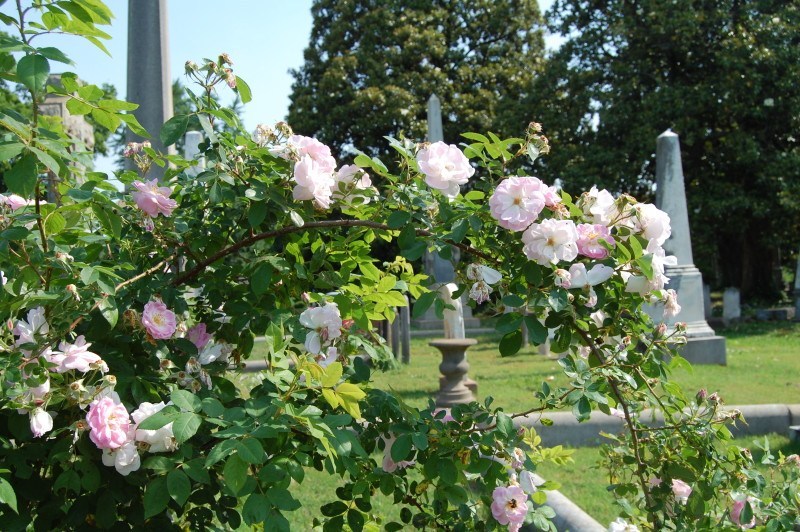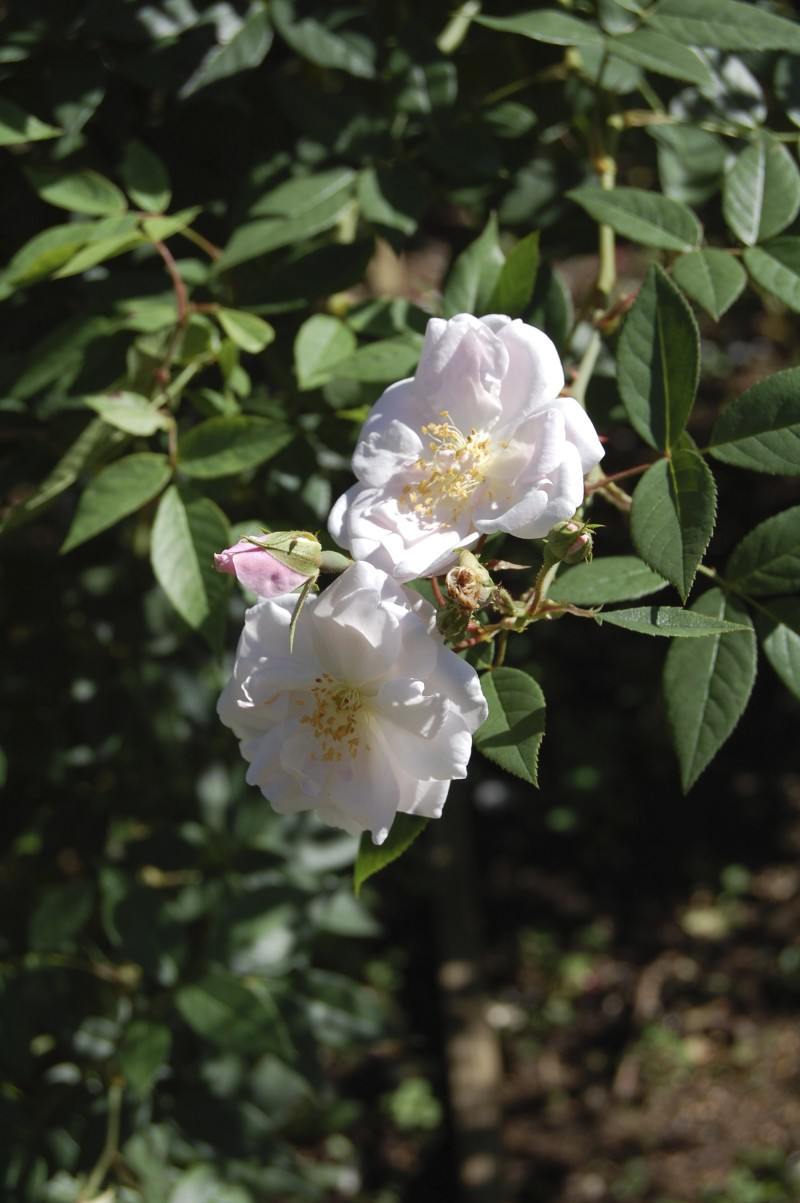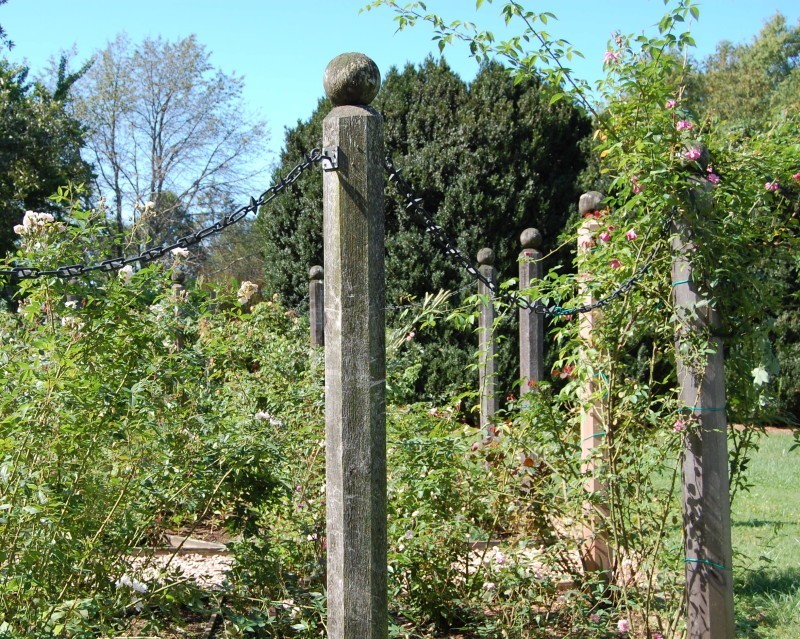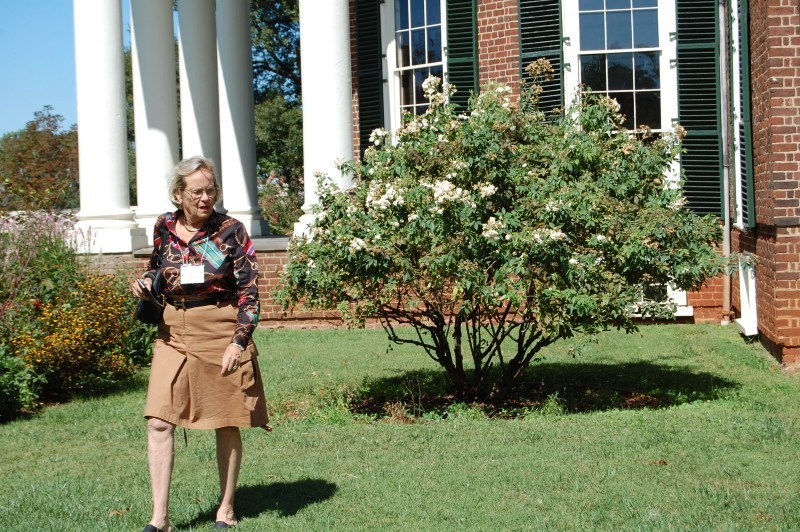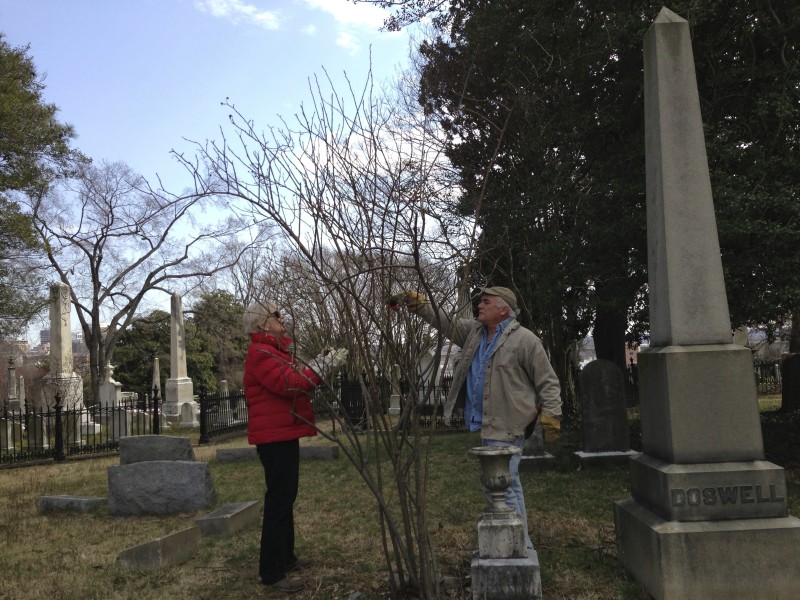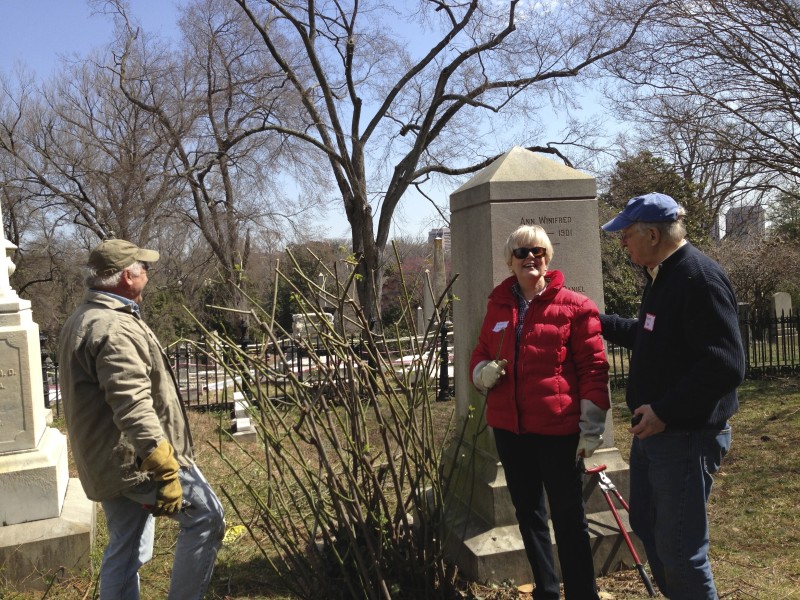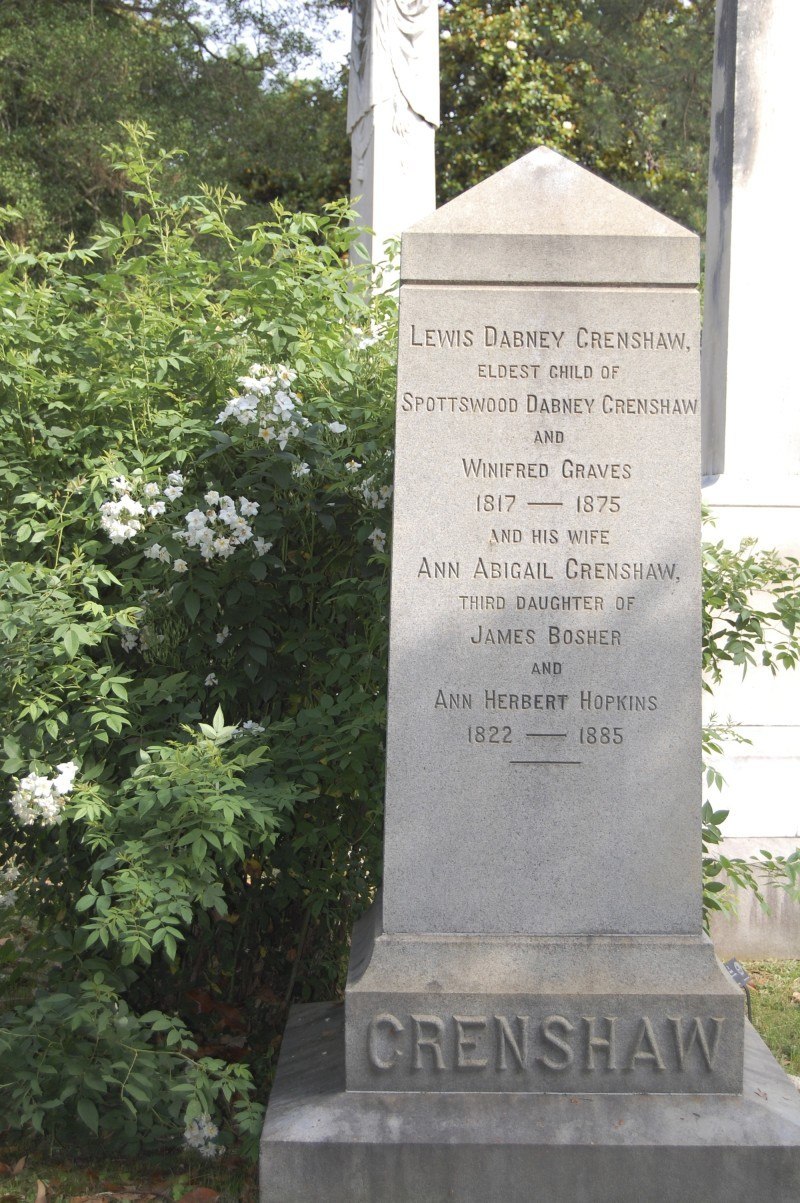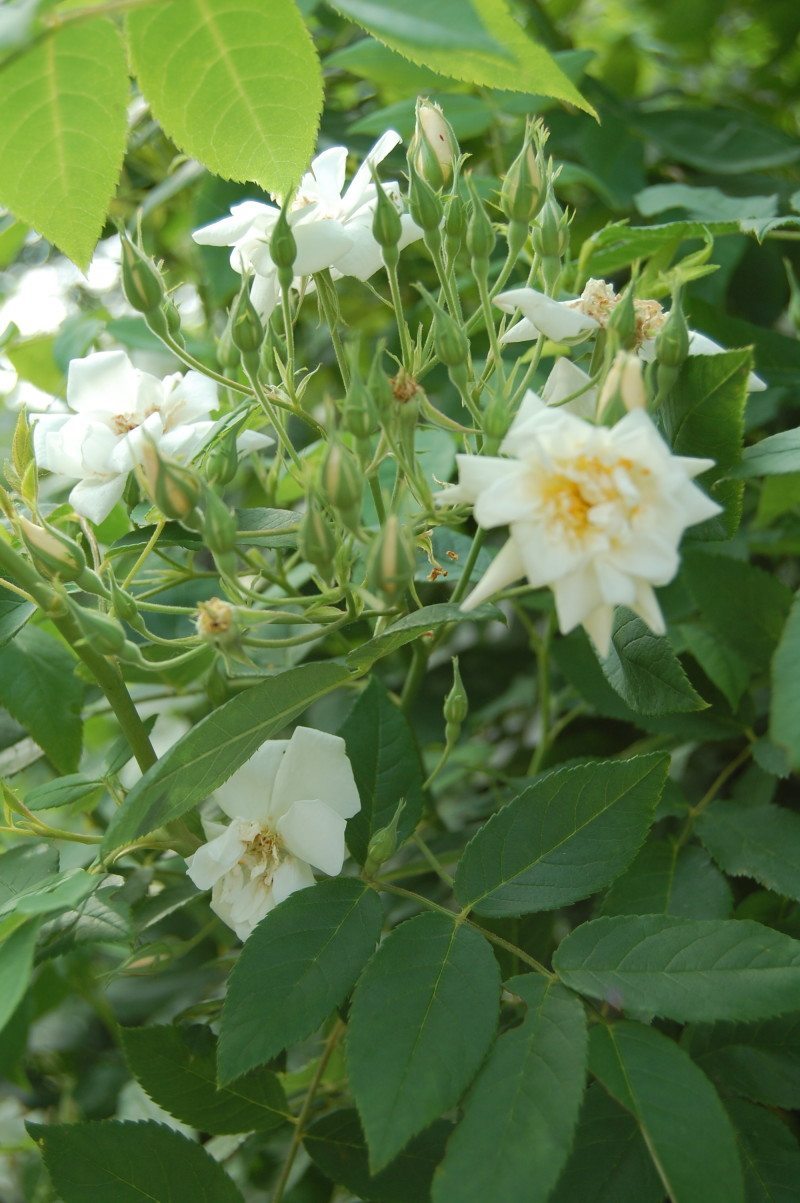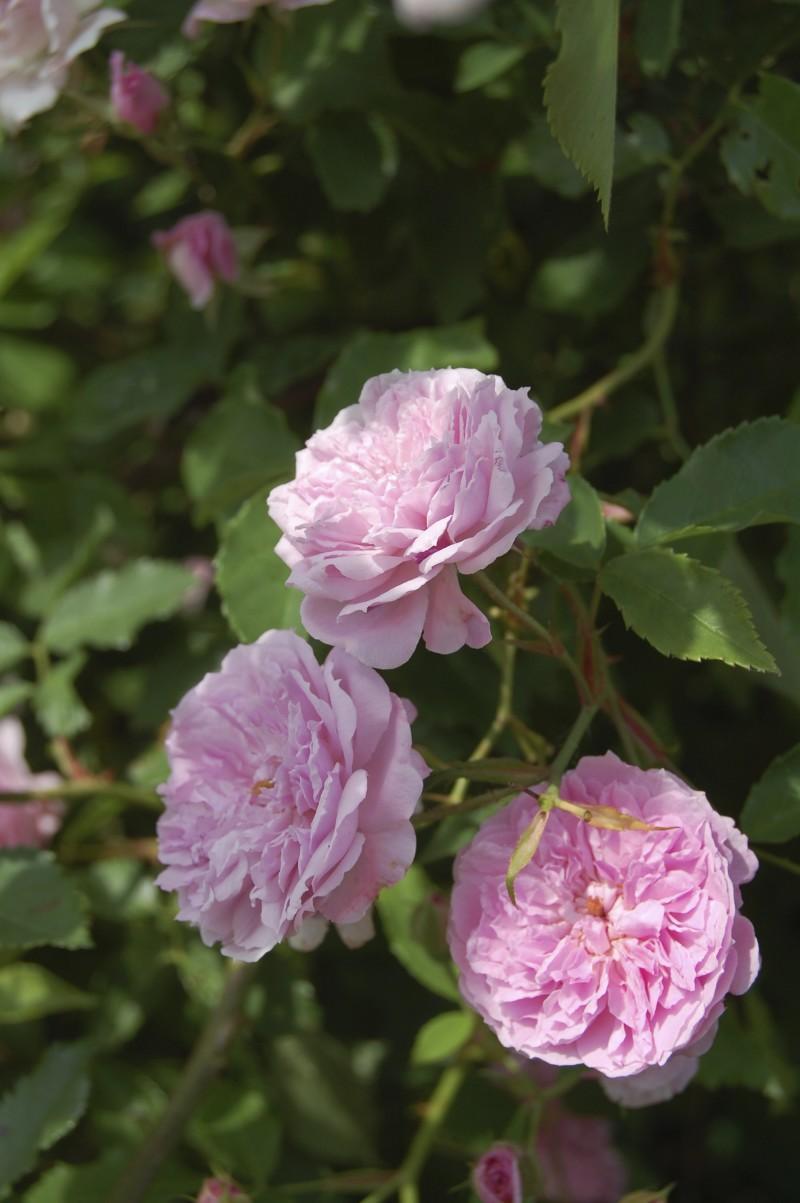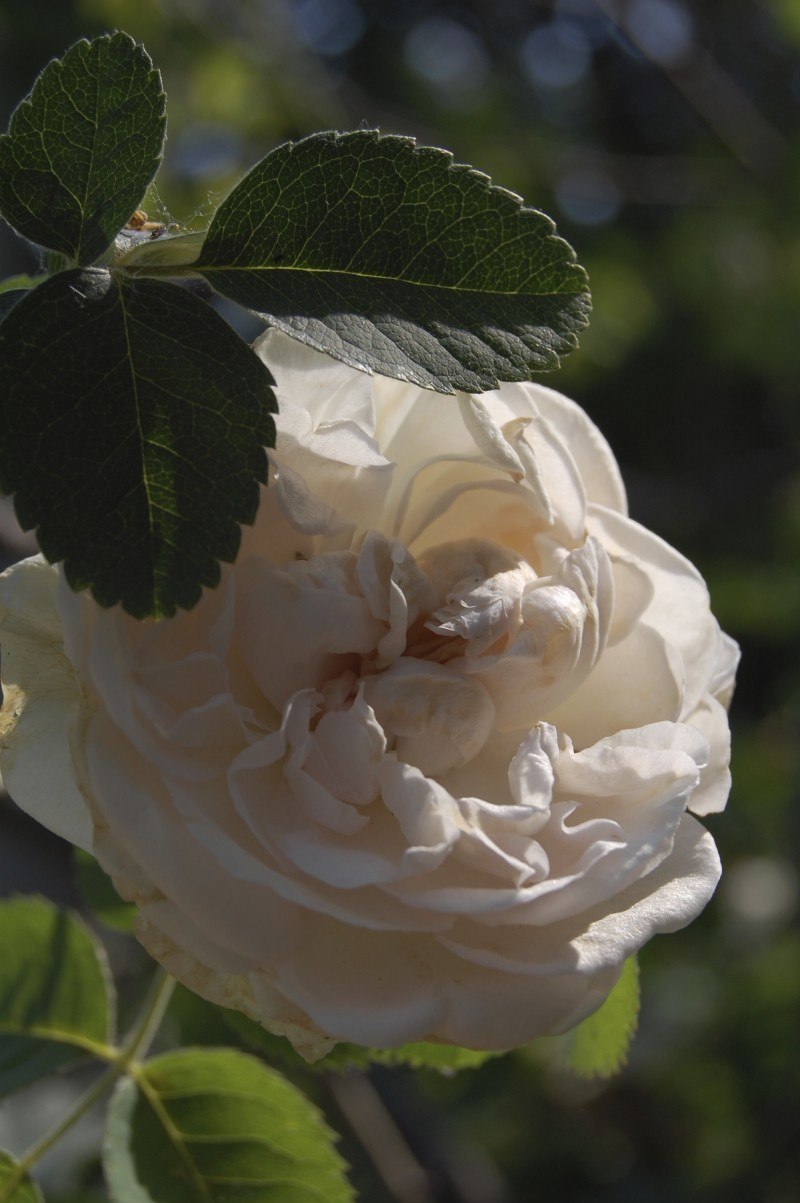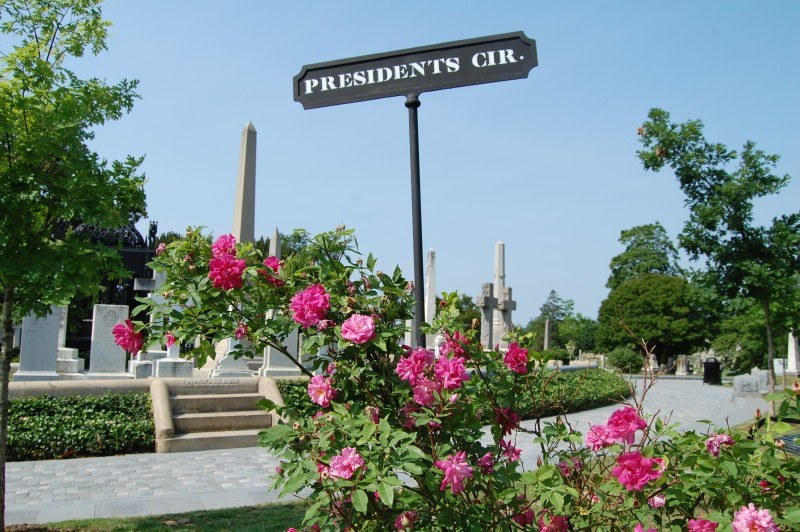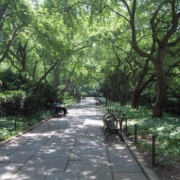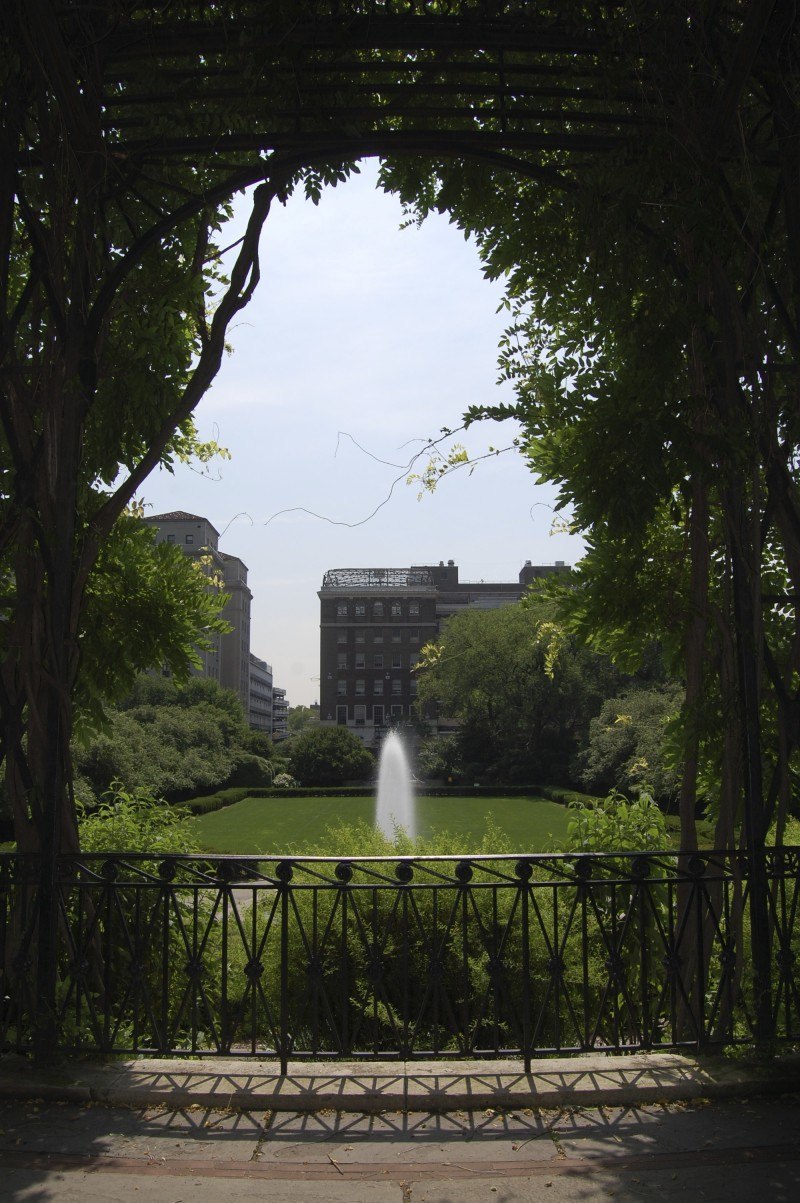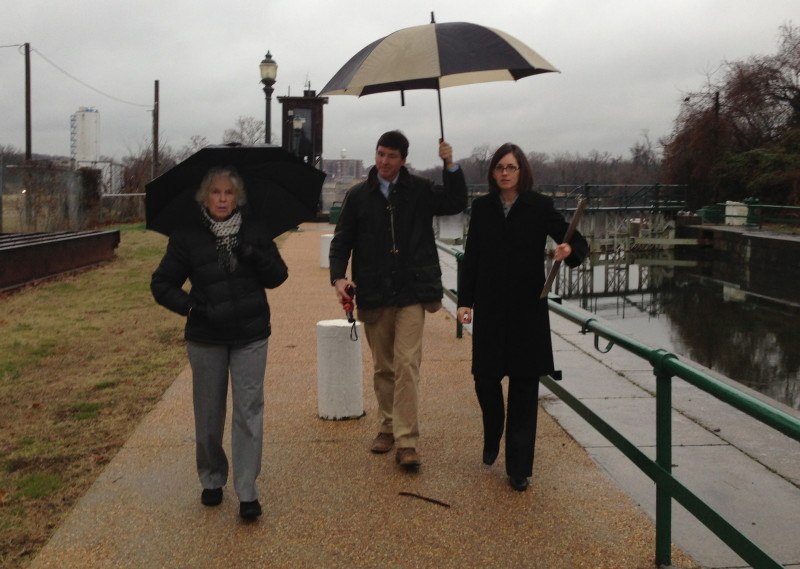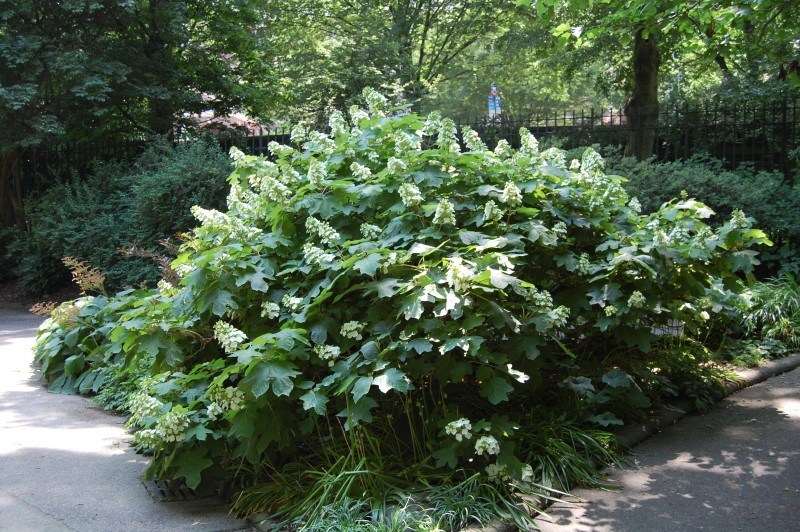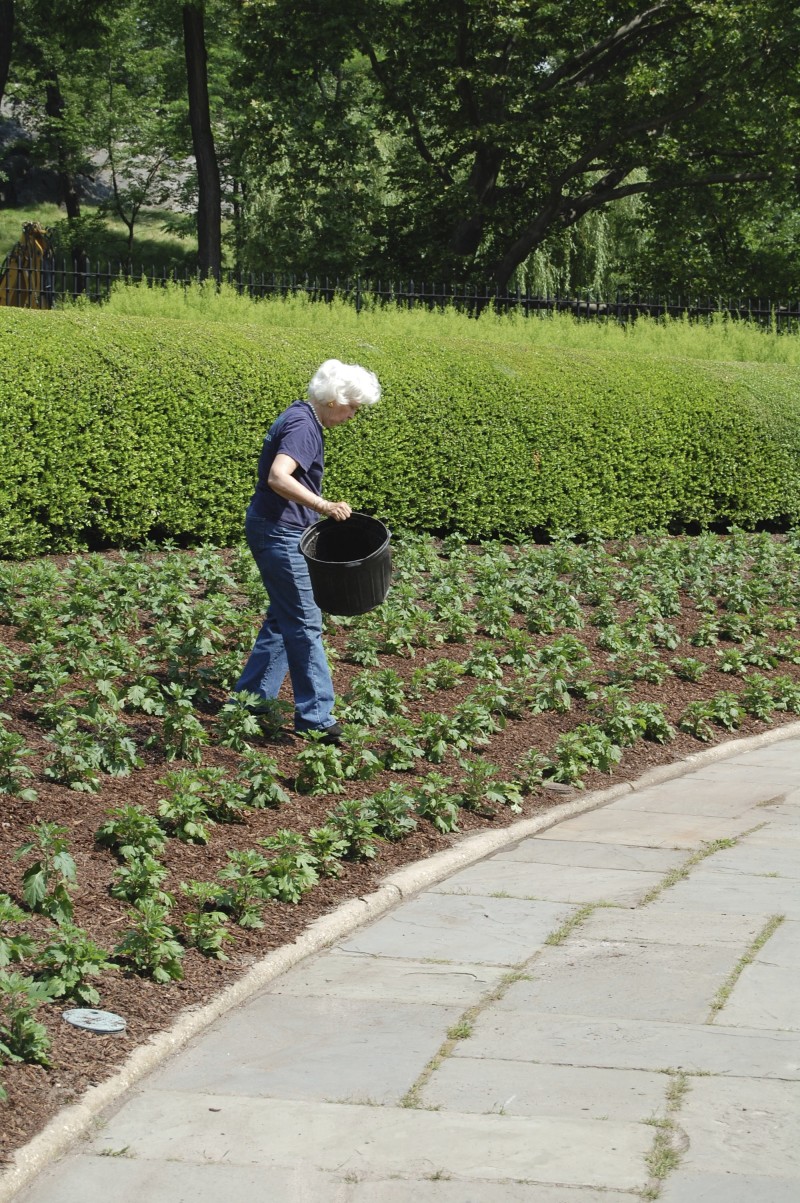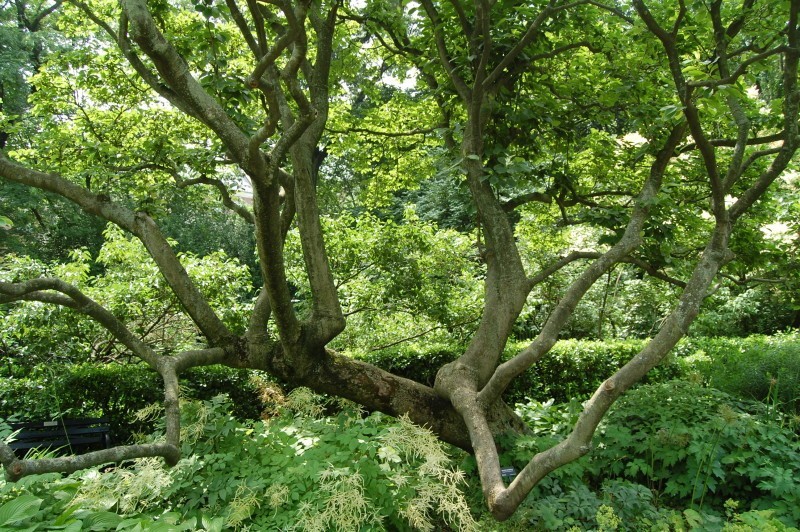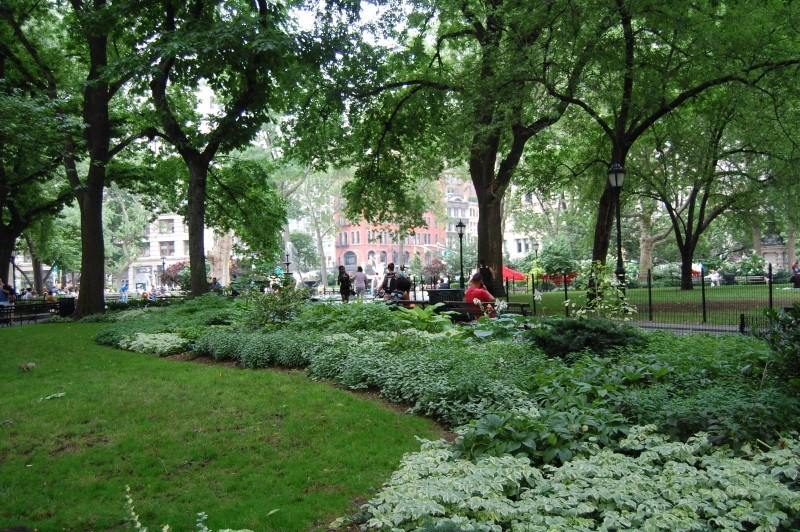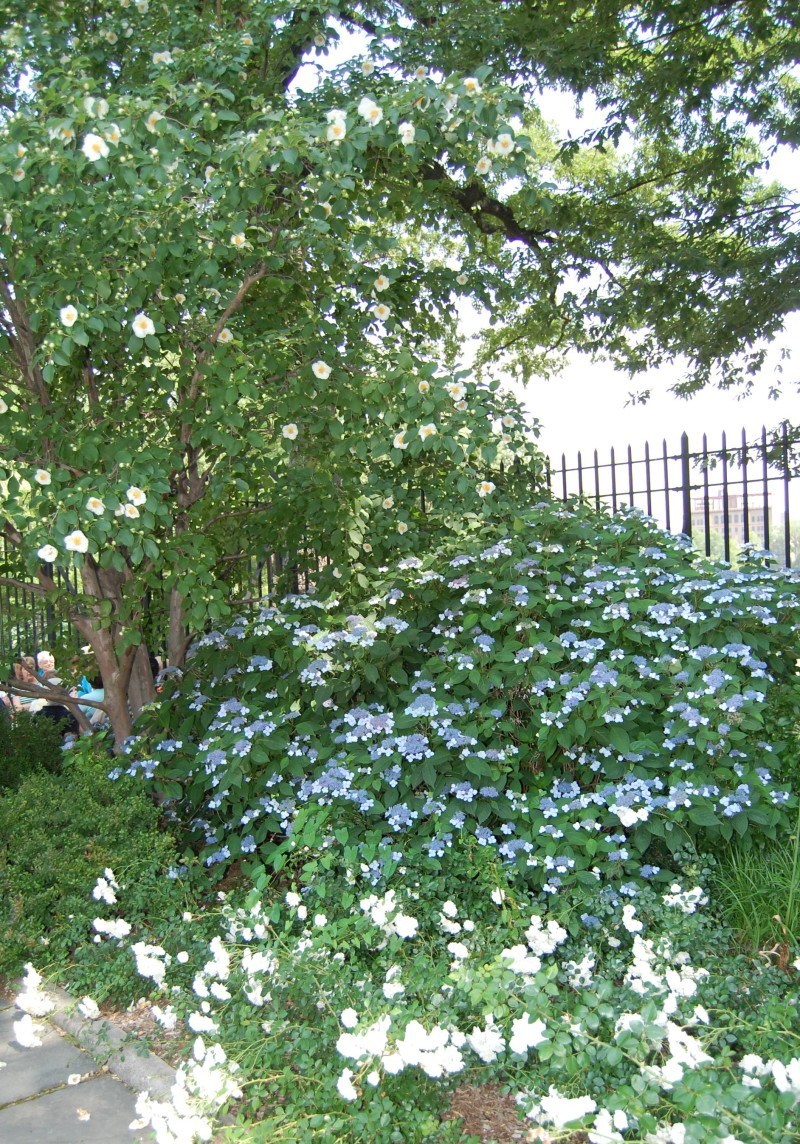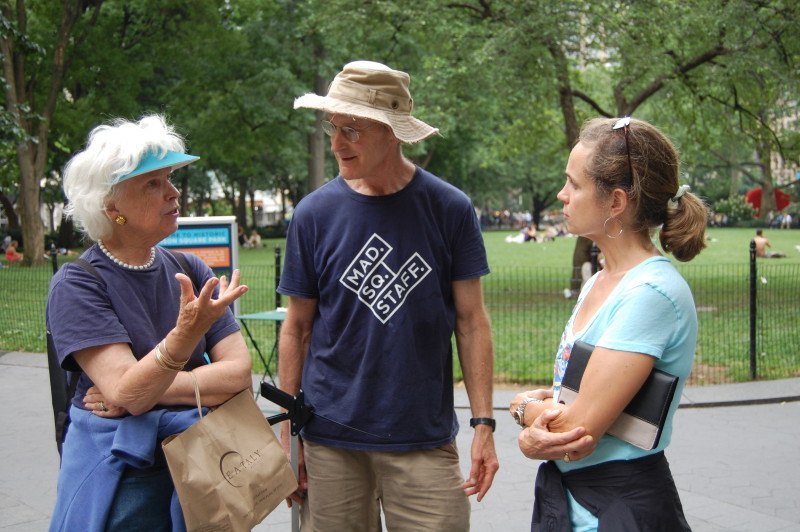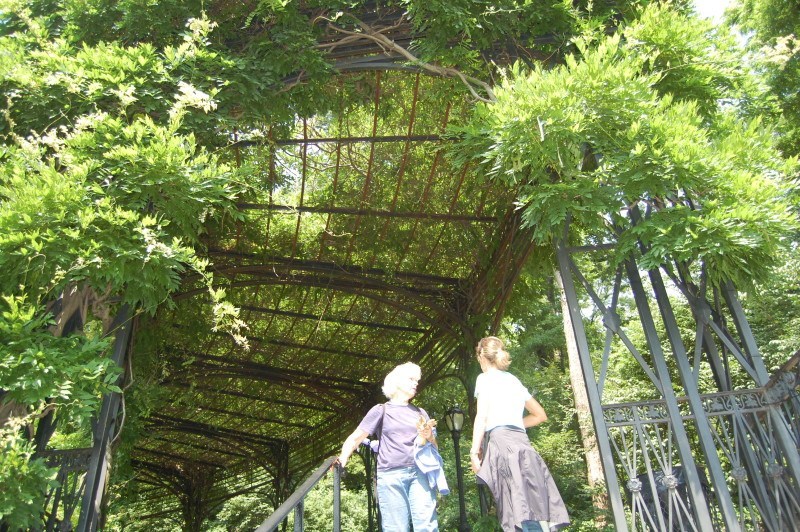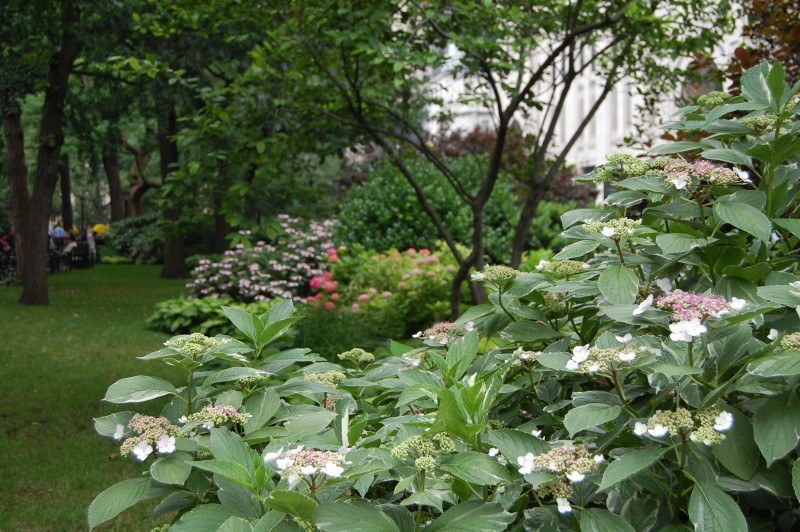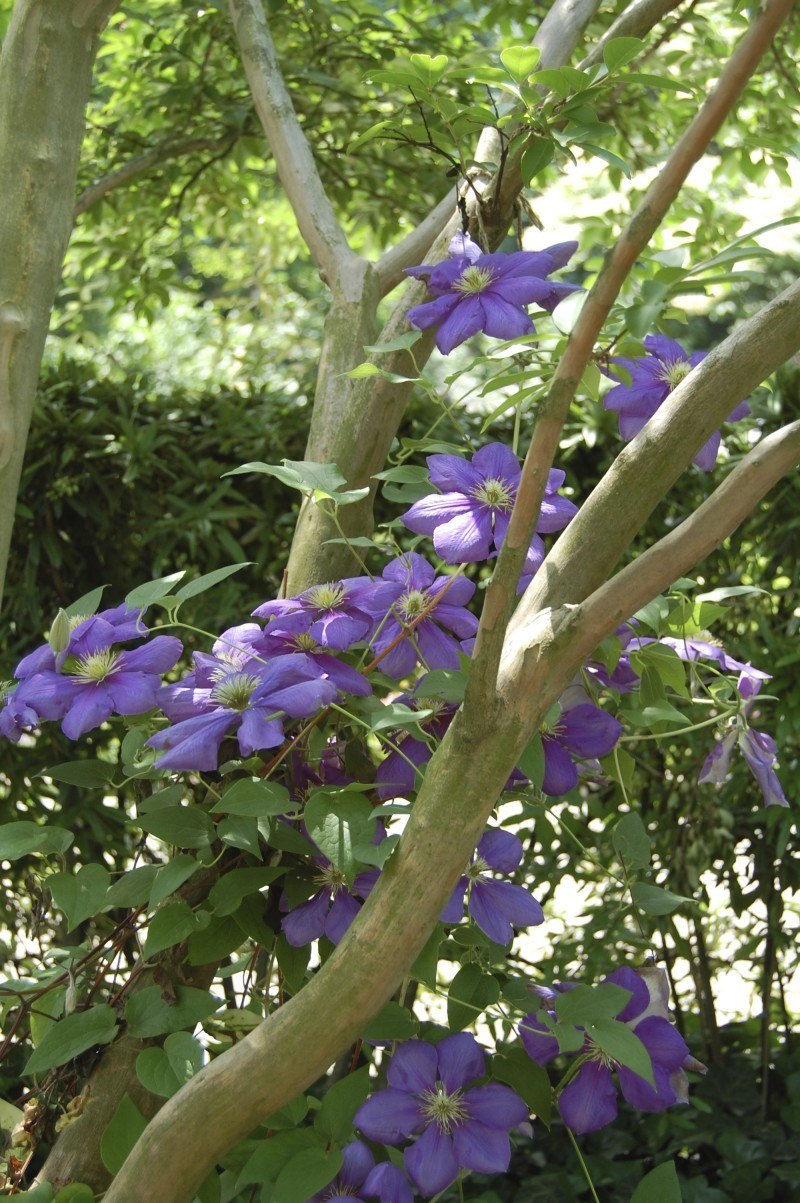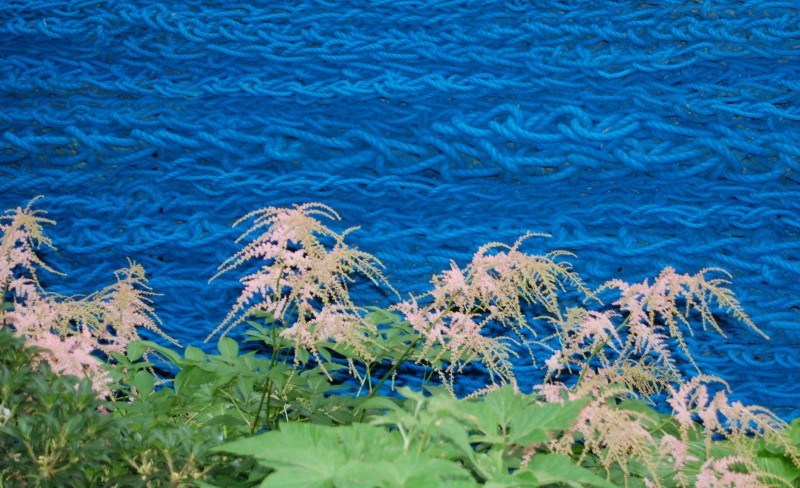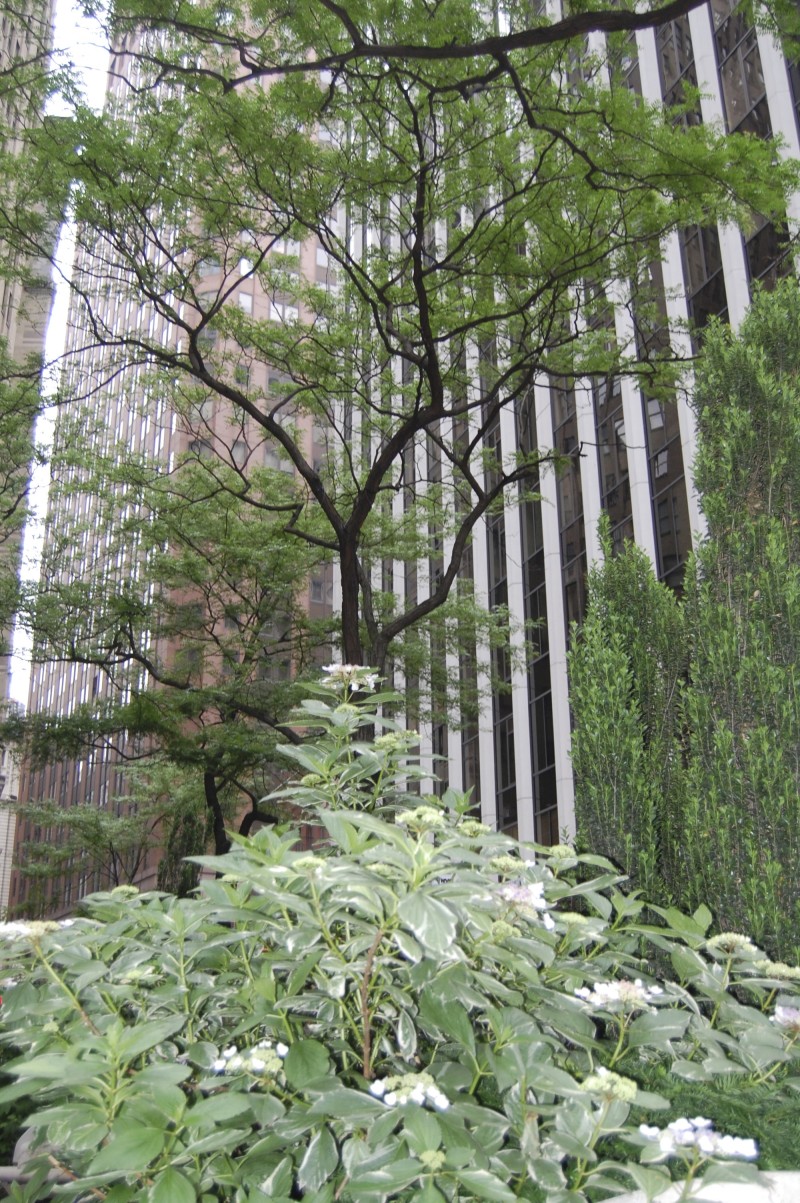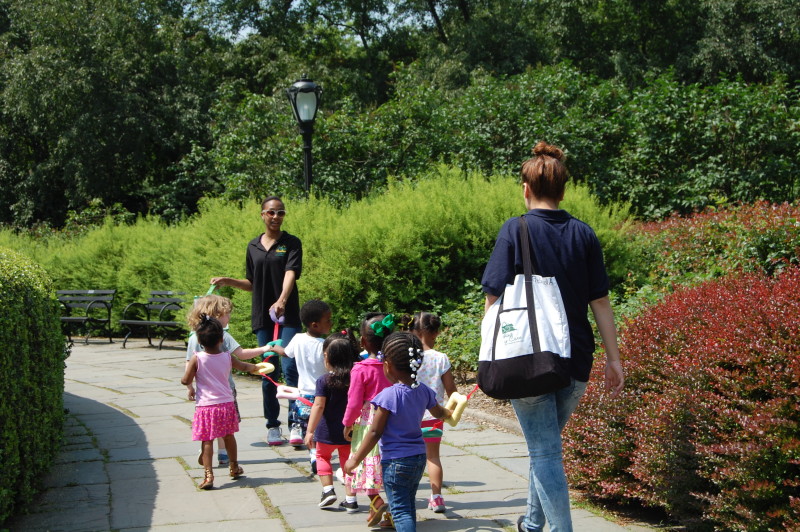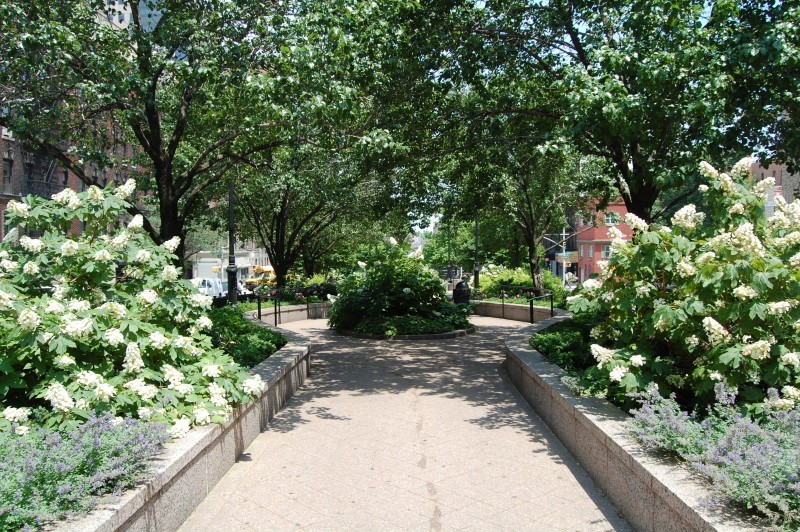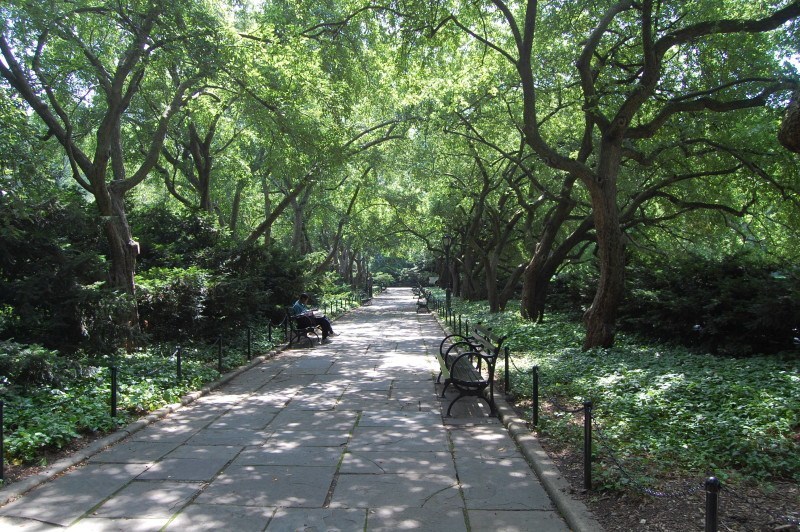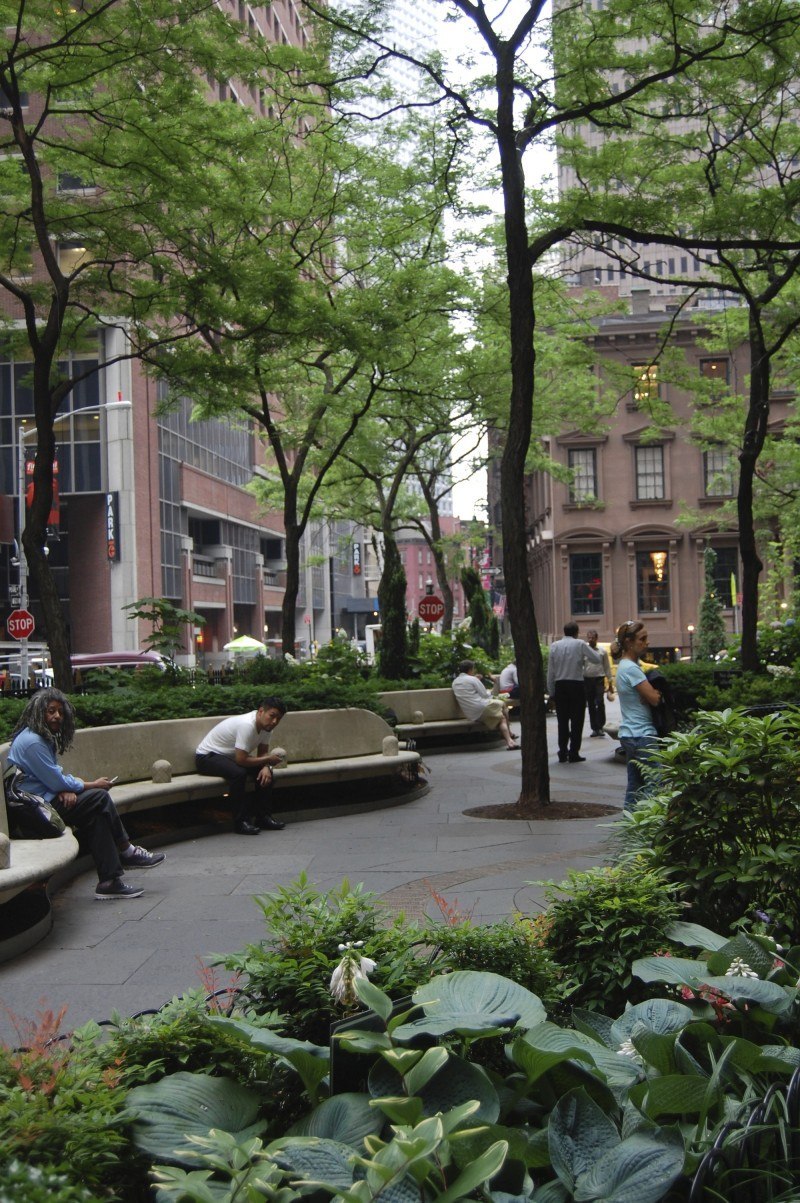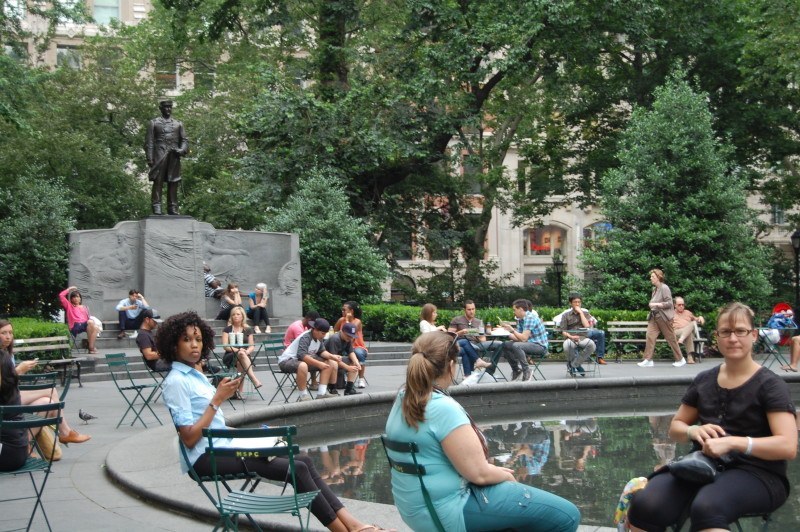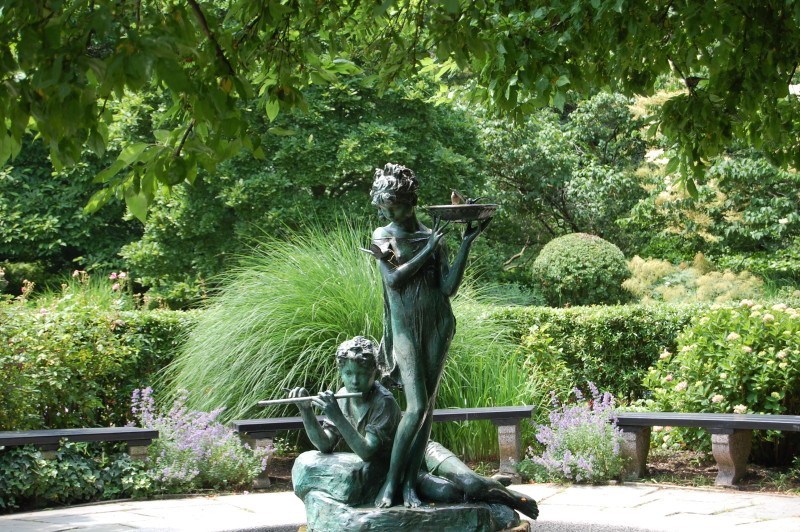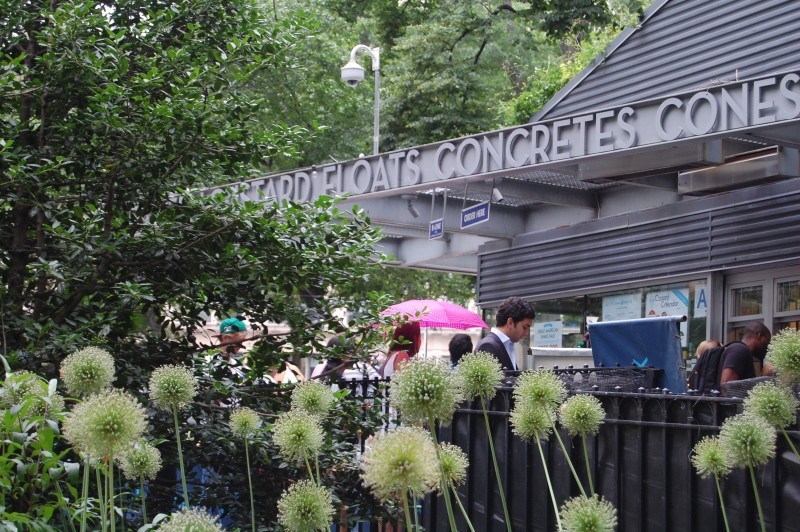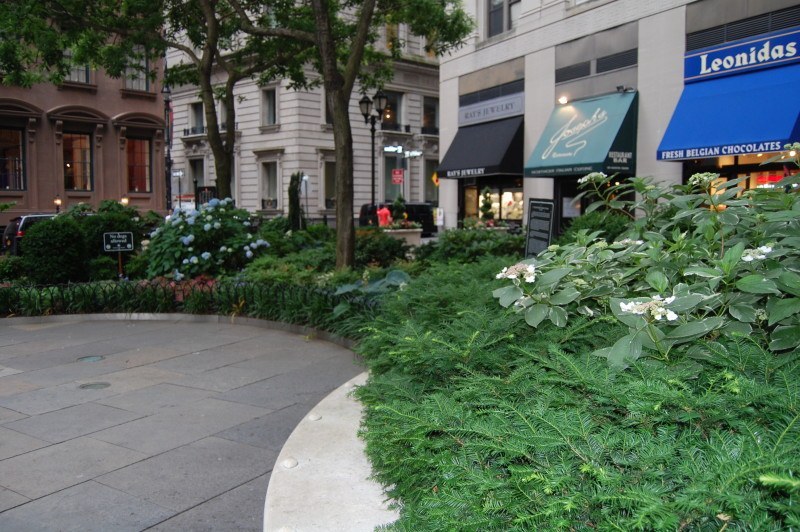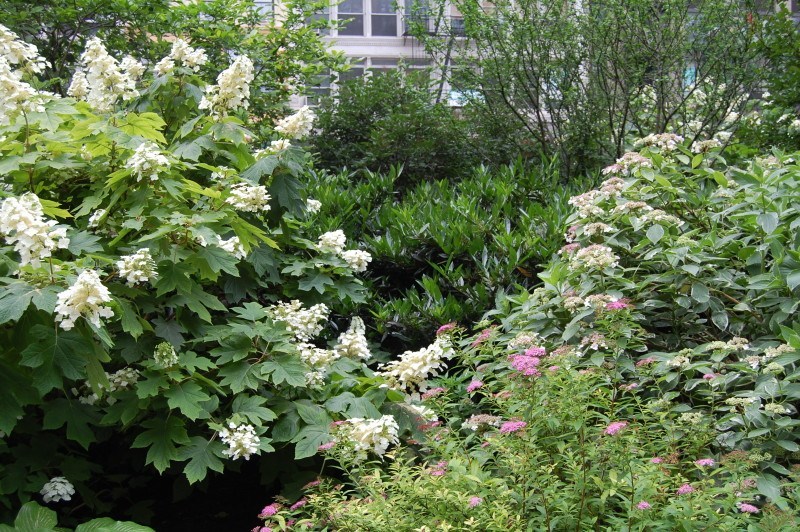SAVE THE INSECTS — AND THE WORLD!
Ok, that sounds a bit cheeky, but it is not an exaggeration. We need a robust insect population to survive. Why am I writing about the importance of insects on a garden design blog? Because the world’s insect population has fallen precipitously in recent years, and those of us who garden can do our part to help restore the balance.

Insects are critical to the earth’s ecosystem in many ways. First, as pollinators, they are a necessary part of food production. At least a third of all agricultural crops are dependent on insect pollination for production. Strawberries, apples, and tomatoes are just a few of the foods reliant on insect pollination.
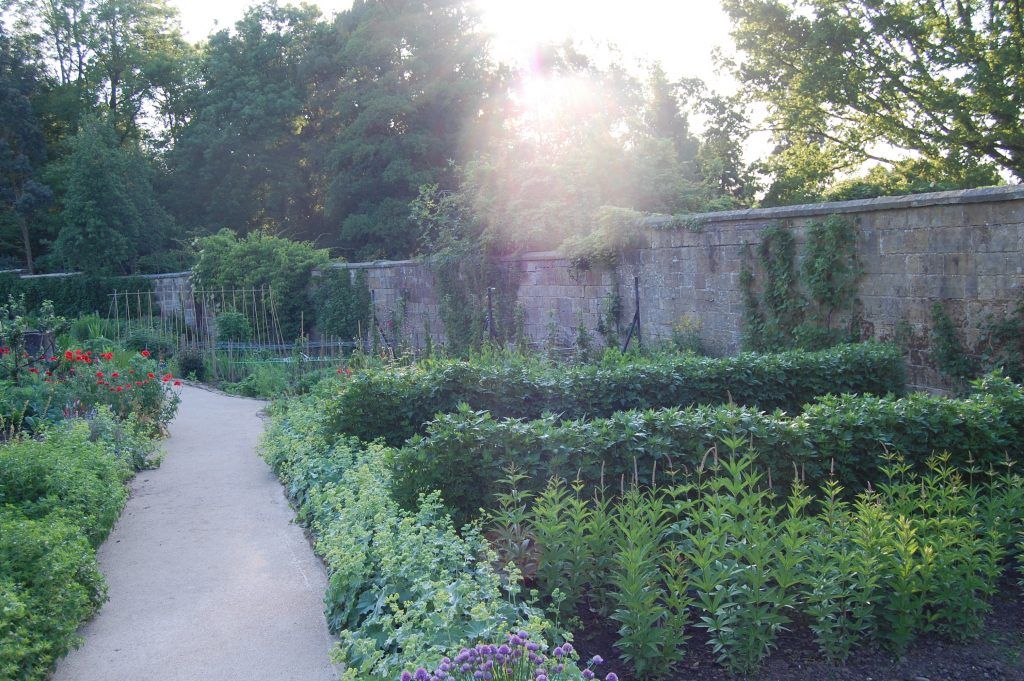
Perennials that draw pollinating insects are planted alongside vegetables in Gravetye Manor’s kitchen garden.
Second, they are a tasty and essential part of the diets of many birds, fish and animals.
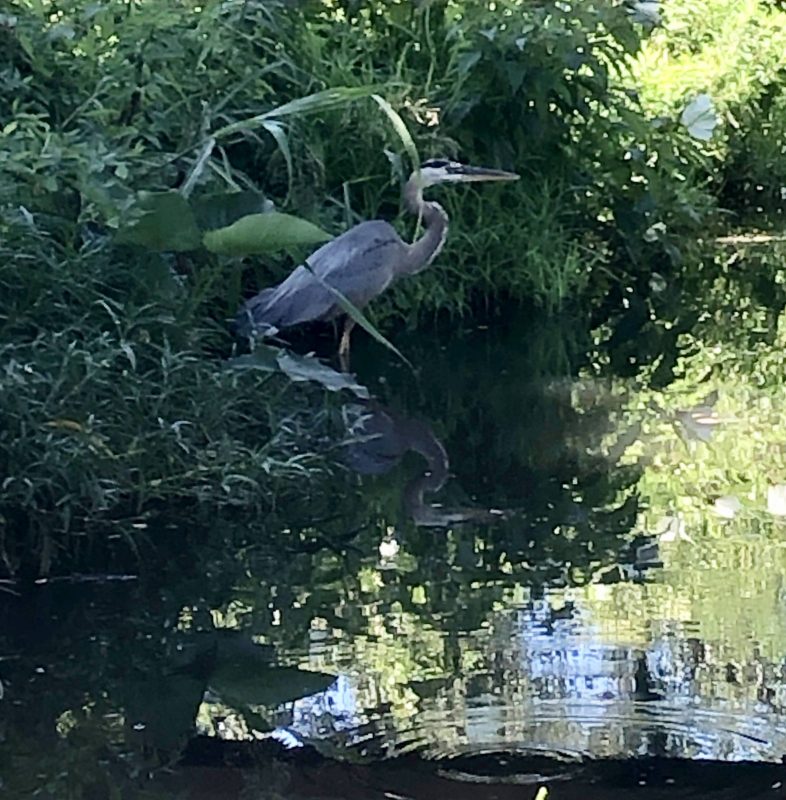
A Great Blue Heron hangs out along the Capital Trees Low Line. Herons eat fish, and fish eat insects.
Third, as Professor Anne Sverdrup-Thygeson writes in the Wall Street Journal (subscription required), “among the essential services that insects perform for us and the planet is waste management. As life ends for plants and animals of all sizes, from midges to moose, somebody or something has to break up and eliminate the dead organic matter. It might not be a hotshot job, but the processes of decomposition and decay are critical to life on Earth.”
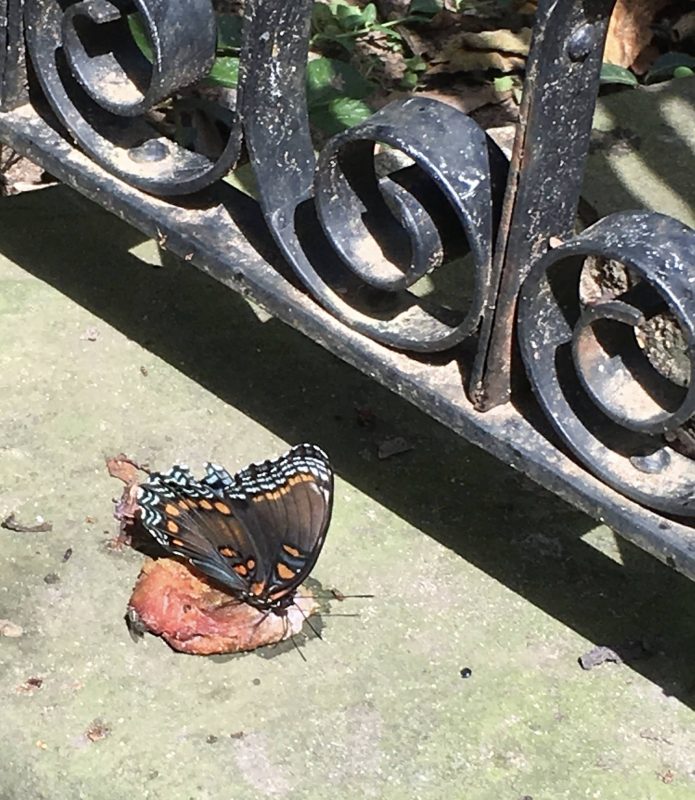
A butterfly feeds on a rotting fig.
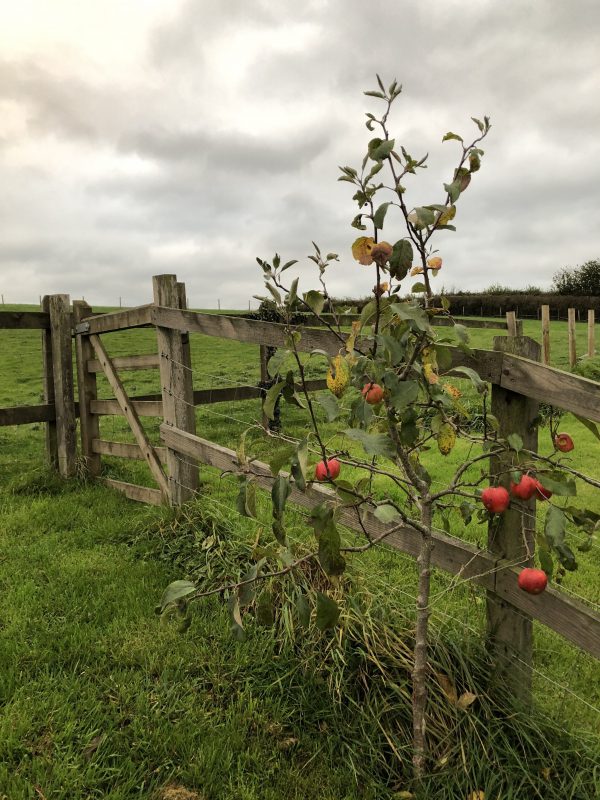
Insects will contribute to the necessary decomposition of the apples that fall to the ground. Rampisham Hill Farm, Dorset, England.
Here are a few fascinating statistics cited by Sverdrup-Thygeson, a professor of conservation biology at the Norwegian University of Life Sciences, and the author of the book Buzz, Sting, Bite: Why We Need Bugs :
- While humans have doubled our population in the past 40 years, the number of insects has been reduced by almost half, according to a 2014 report in the journal Science.
- Three quarters of all known plant and animal species on this planet are insects. Those giant quantities help to keep nature in balance, so anything that affects them ultimately affects us.
- Herbivores eat just 10% of all plant production. 90% is left lying on the ground — impressive amounts of protein and carbohydrates in need of recycling. Insects eat the rotten remains, which not only clears the ground of dead plants and animals, but also returns the nutrients to the soil. Without it, new life could not grow.
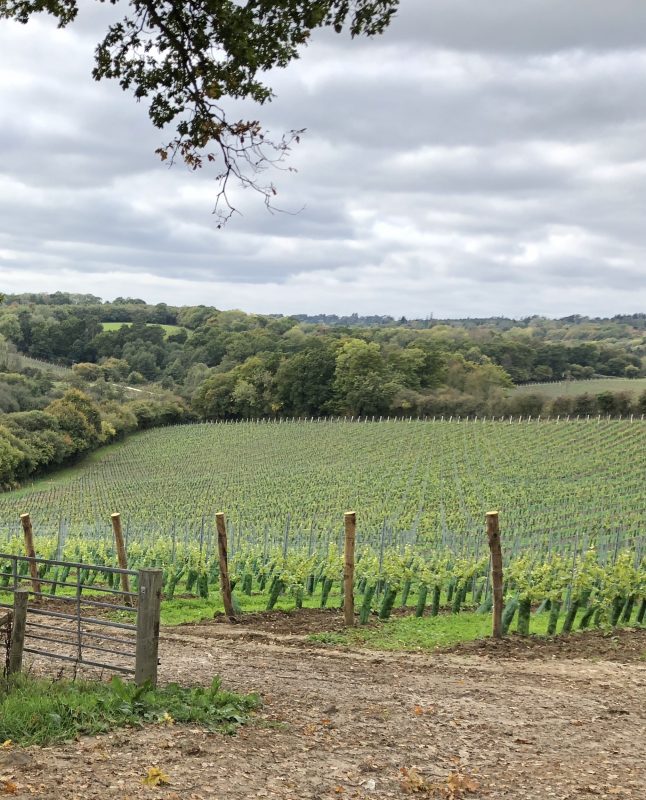
Shrubs, trees, and wildflowers border this field, providing pollinators for the crops, shelter and food for birds and wildlife, and erosion control to protect streams.
WHAT WE CAN DO TO HELP
- Plant more trees, shrubs, vines and perennials on your property. Shoot for making a large percentage of those plants native, as those are the plants our native insects rely on. Reduce the amount of mown lawn, and increase planting beds and meadows. Consider planting fewer “double” flower cultivars, as these tend to contain little nectar, and are difficult for pollinators to access. Leave as many wild, undisturbed areas as possible to support wildlife.
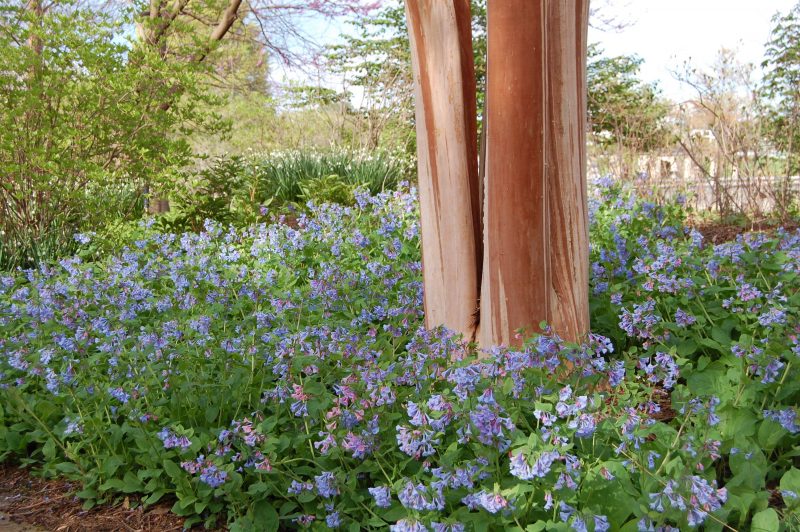
Native Virginia Bluebells (Mertensia virginica) spread under a Crapemyrtle (Lagerstroemia indica) at Lewis Ginter Botanical Garden.
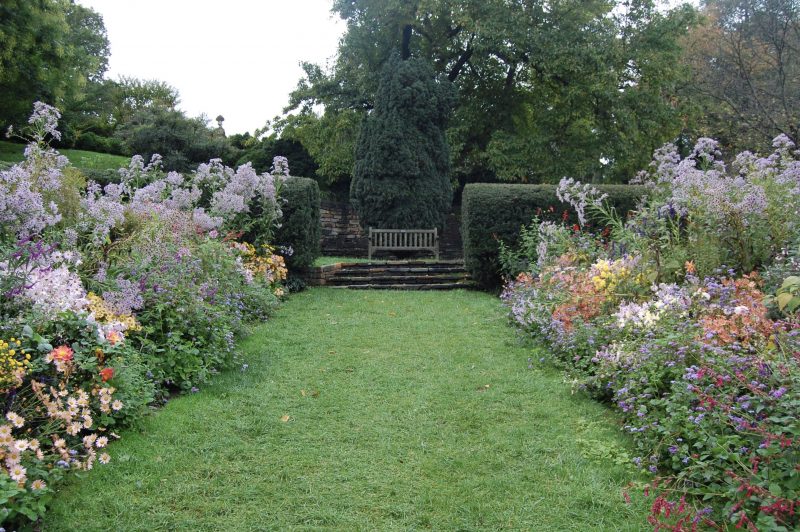
This four-season border at Dumbarton Oaks includes native and non-native perennials, and, importantly, provides nectar, pollen, food, and shelter year- round.
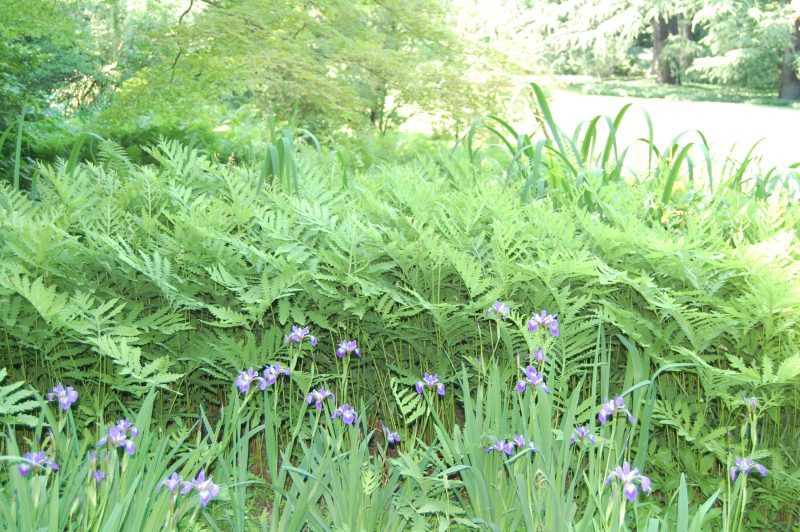
Native Blue Flag Iris (Iris versicolor) and Sensitive Fern (Onoclea sensibilis) are planted in a large swath.
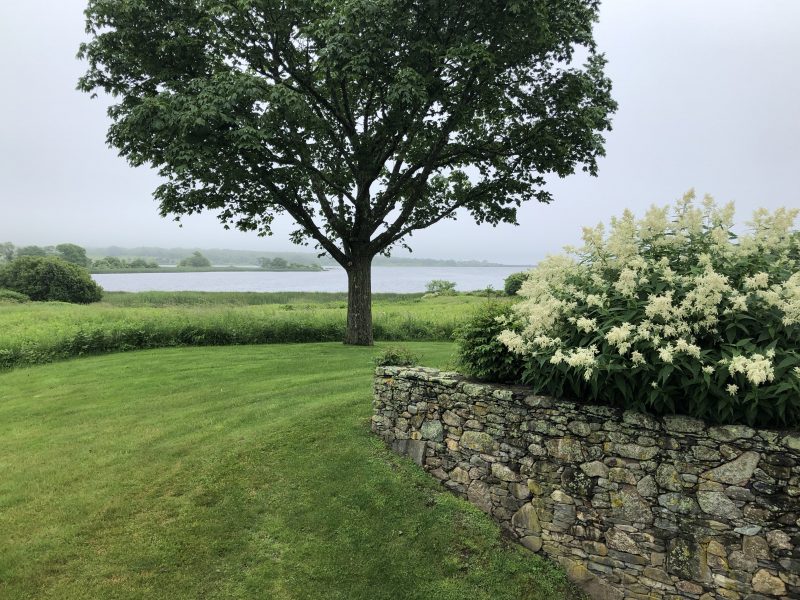
The owner of this Little Compton, Rhode Island garden limits the amount of mowed lawn, allowing meadow to grow along the edge of Brigg’s Marsh, which filters pollutants, limits erosion, and attracts and protects insects.
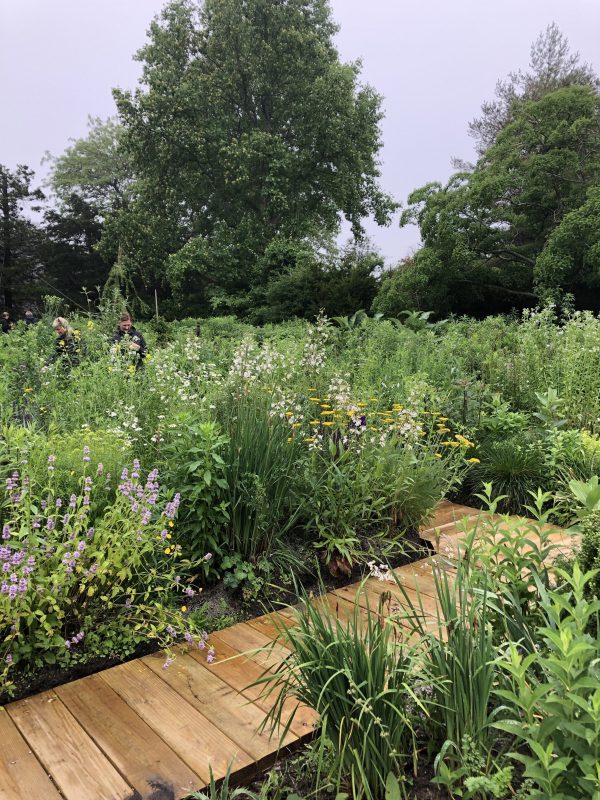
Perennials and grasses are cultivated in a meadow planting at Sakonnet Garden. Owners John Gwynne and Mikel Folcarelli continuously study and experiment with the best methods of providing a biodiverse habitat for specific species of birds native to the area.
2. Reconsider what it means to have a cultivated garden. For those who love a manicured garden, try to throw a little caution to the wind and become a bit less tidy. Do not cut back perennials and grasses until late winter or early spring,and leave as many wild, undisturbed areas as possible, allowing wildlife to use the plants for shelter, food and nesting material.
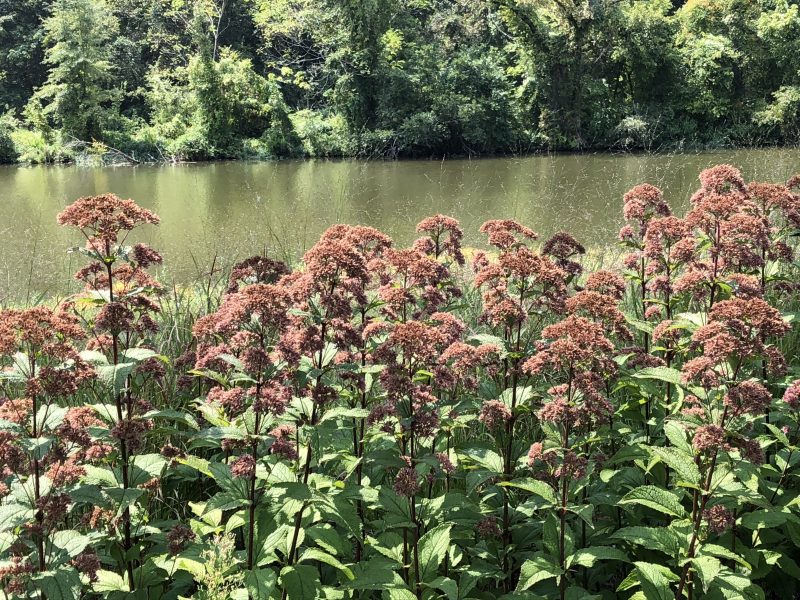
Capital Trees leaves the native Joe Pye Weed (Eutrochium purpureum) throughout the winter along the Low Line and at Great Shiplock Park in the rain garden.
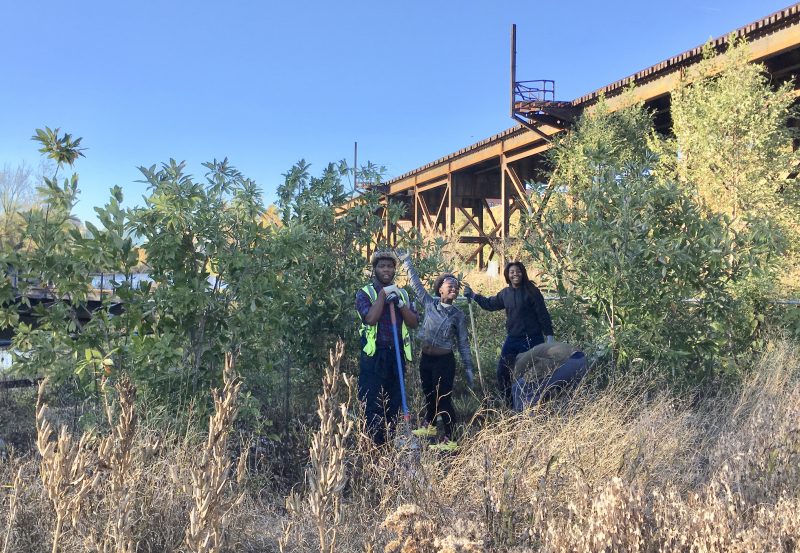
Members of the Groundworks RVA Green Team cut back the Joe Pye Weed and grasses in the rain garden at Great Shiplock Park in late winter.
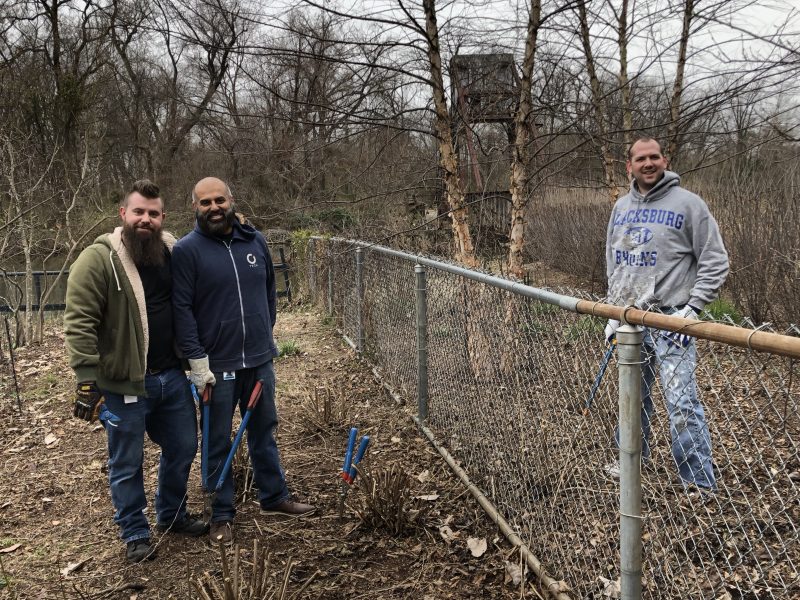
Capital One employees volunteer their time with Capital Trees to cut back shrubs and perennials in late winter. Capital Trees leaves most plants unpruned throughout the fall and winter to provide food, shelter and nesting material for wildlife at Great Shiplock Park and the Low Line.
3. Cease or minimize the use of pesticides. Many of you have heard me say that I’m a Darwinist gardener. I began as such because I just didn’t have the time or inclination to deal with high-maintenance plants that could not thrive without my special attention or intervention. As it turns out, my laziness paid off, as this is also the most environmentally sound way to garden. Pesticides are not selective. They kill whatever they come into contact with. Spray a plant to kill one pest (or the entire property to kill mosquitos), and you kill other species that come into contact with the poison, thus affecting the entire ecosystem.
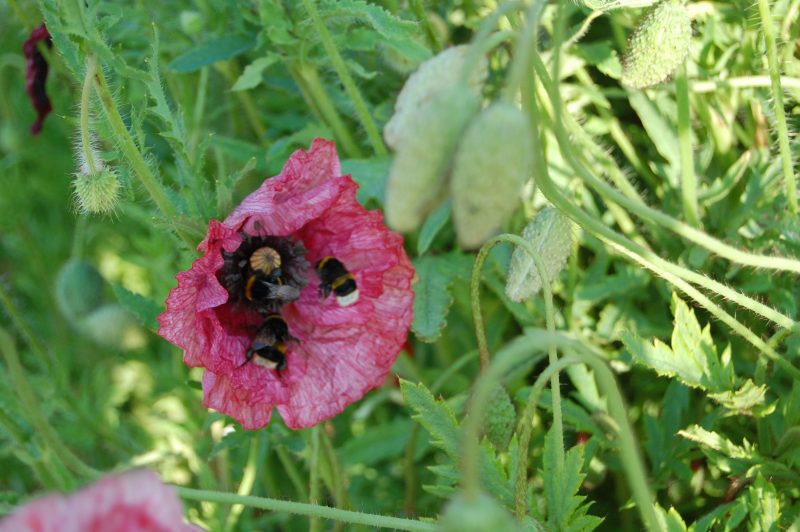
Bees feast on a Poppy in the Gravetye Manor kitchen garden.
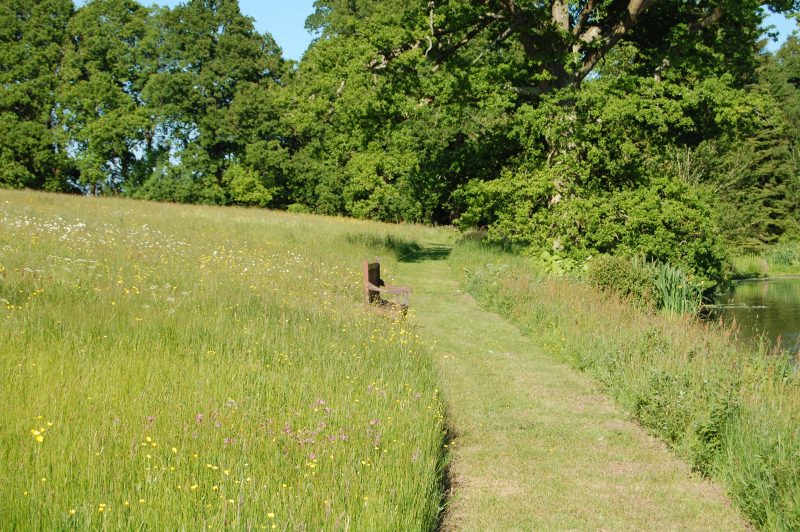
Gravetye Manor leaves the fields unmowed throughout the growing season, cutting a path near the water’s edge.
4. For those with larger properties, including farms, offset the monoculture of crops by allowing wide buffers to border the fields, and increase the amount of land dedicated to meadows, hedgerows, verges or tree canopy.
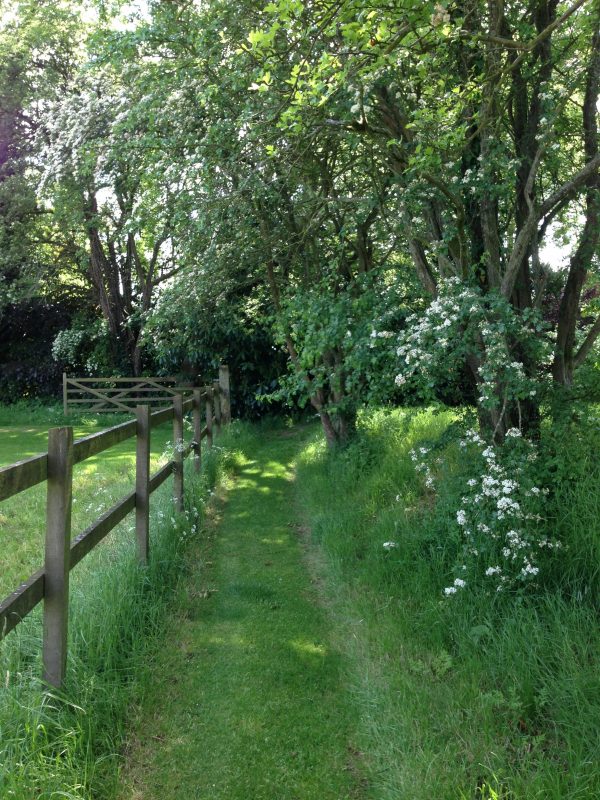
Flora and Ed allow grasses and wildflowers to grow through much of their property in Lasham, England. Flora owns a cooking school on the property and grows some of the food used for her delicious meals.
5. If your property includes woodlands, allow some fallen trees and branches to decay, providing homes for insects.
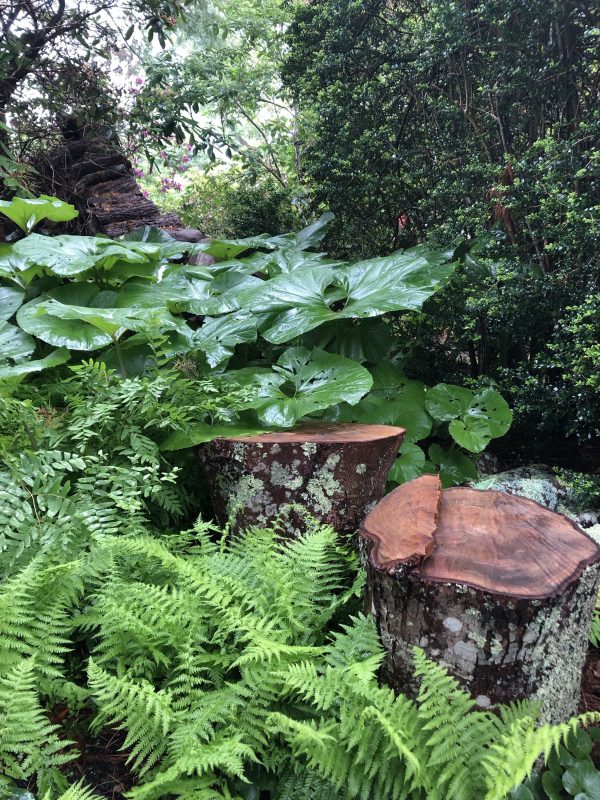
Woodland plants grow alongside the decaying tree stumps in Sakonnet Garden.
6. Encourage your locality and state to increase conservation and wilderness areas; to plant more shrubs, trees and perennials in public parks and increase the matrix of green spaces throughout the city and region; to join the verge movement, by decreasing the frequency of mowing in roads’ rights-of-way during the growing season.
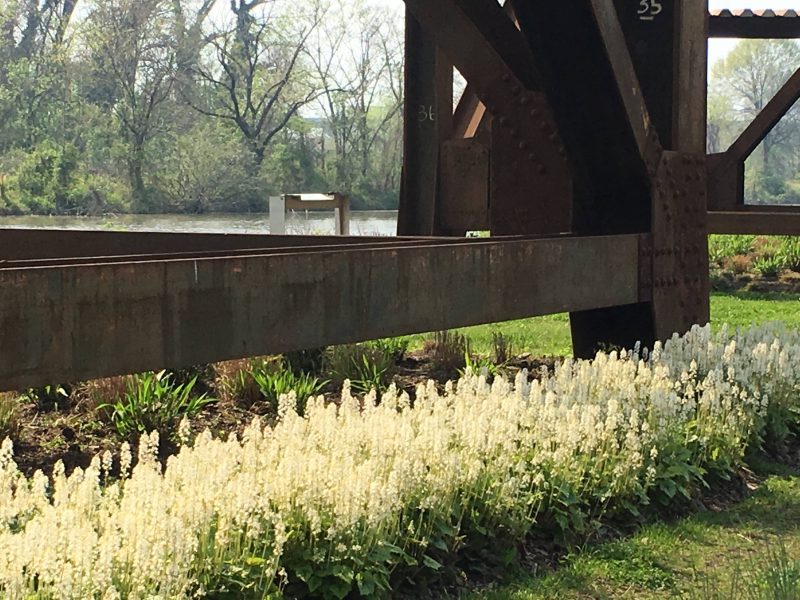
Native Foamflower (Tiarella cordifolia) grows at the edge of the CSX viaduct along the Capital Trees Low Line and Virginia Capital Trail.
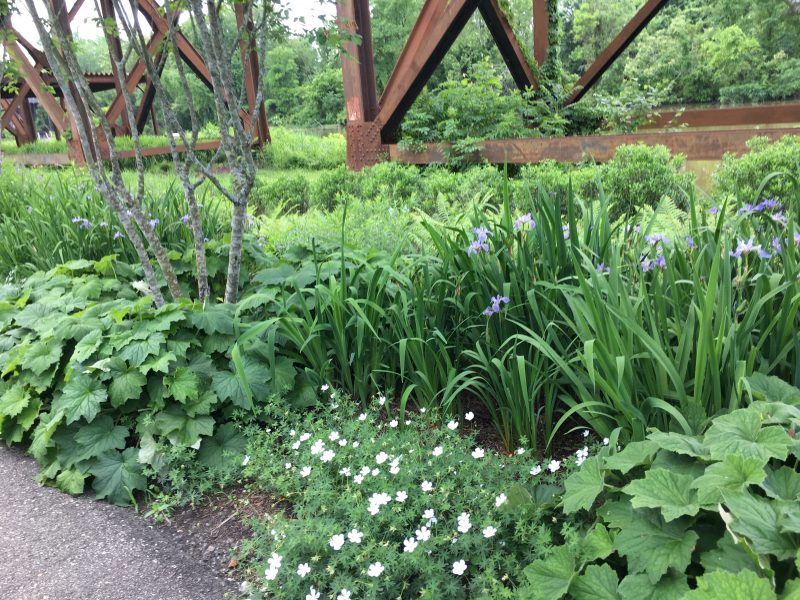
Perennials and native trees grow along the Capital Trees Low Line and Virginia Capital Trail in Richmond’s Shockoe Bottom.
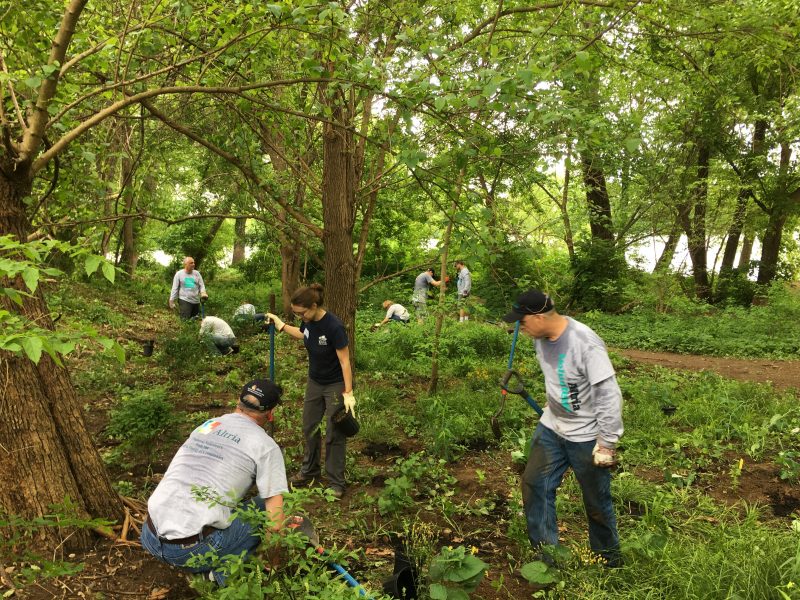
James River Association’s Amber Ellis leads a group of volunteers planting native woodland perennials at the James River Park System’s Chapel Island. JRA and Capital Trees work with the JRPS Invasive Plant Task Force to restore native habitat throughout the James River Park System.
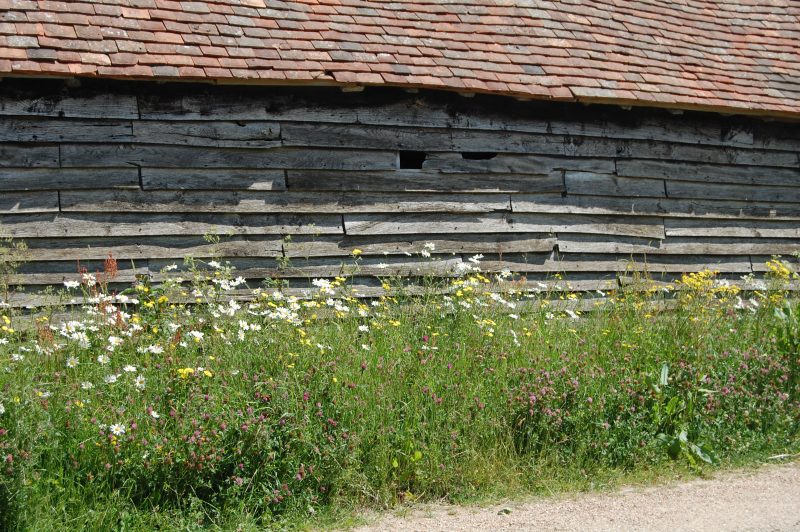
In England, Plantlife is leading the charge to encourage localities to allow roadside verges to go unmown duirng the growing season. Let’s do the same in our own localities. It saves the government money and increases the amount of public space providing wildlife habitat.
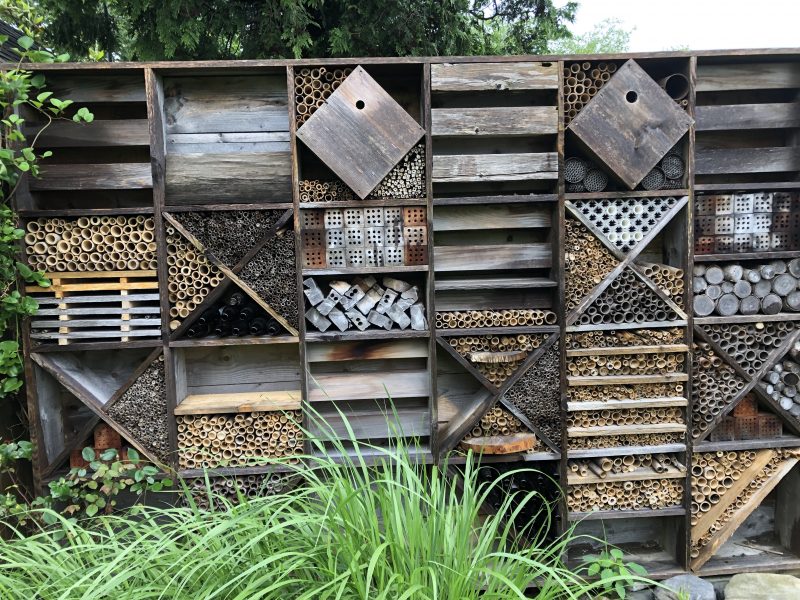
How cool is this insect house at Sakonnet Garden? By using a variety of materials, the insect house (also called an insect hotel) attracts a wide range of insects.
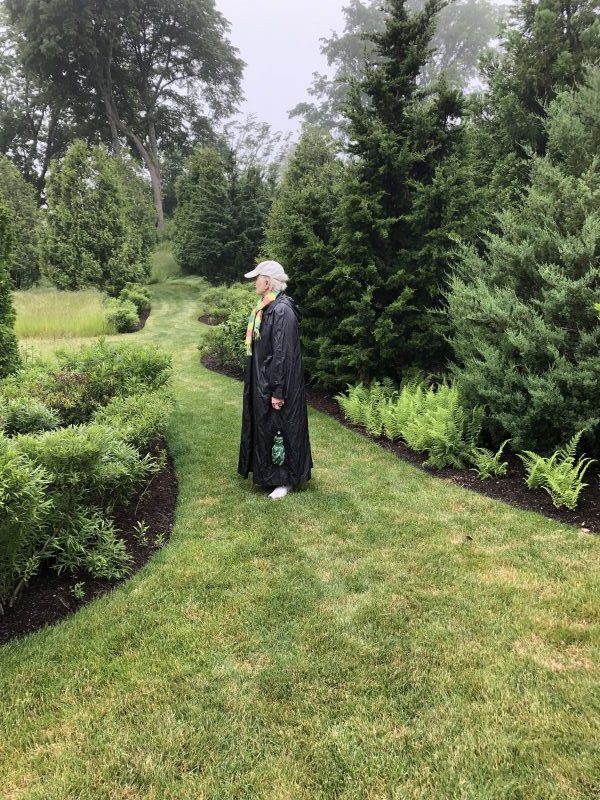
You can just see the wheels turning as Hylah Boyd, who forwarded me the Sverdrup-Thygeson article, surveys the landscape. The Capital Trees Board member has recommended that boy scouts and other volunteer groups build insect houses in Richmond’s parks and public landscapes. Capital Trees is exploring the possibility of building one along the Low Line.
In conclusion, I again quote Sverdrup-Thygeson: “high biological diversity makes ecosystems more resistant and resilient. . . A varied global landscape provides many more opportunities for the flourishing of complex insect life — and everything that depends on it, including us.”
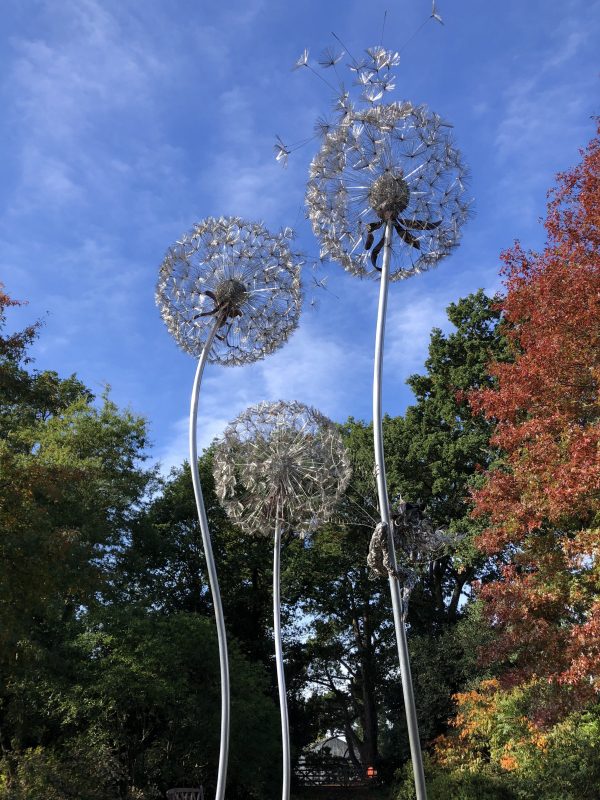
Let’s do our part to make sure that we can continue to enjoy fantastical steel dandelions (at the Royal Horticulture Society’s Wisley Garden) as well as nature’s version.
[custom-related-posts title=”Related Posts” none_text=”None found” order_by=”title” order=”ASC”]

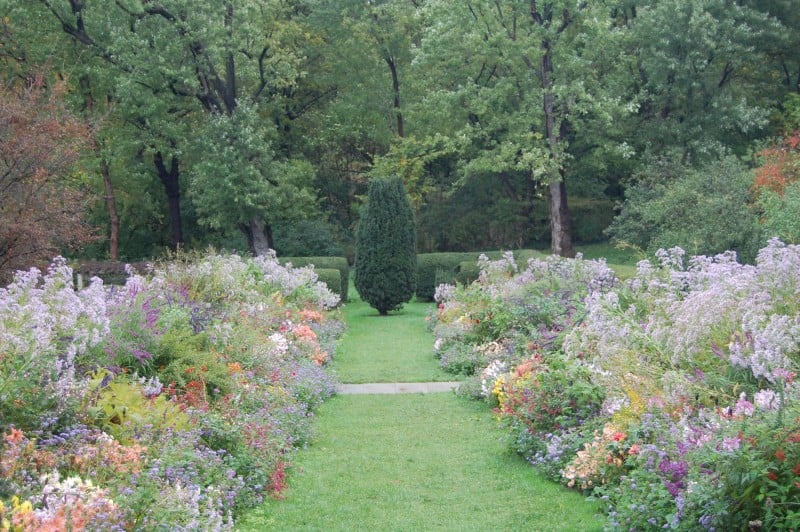
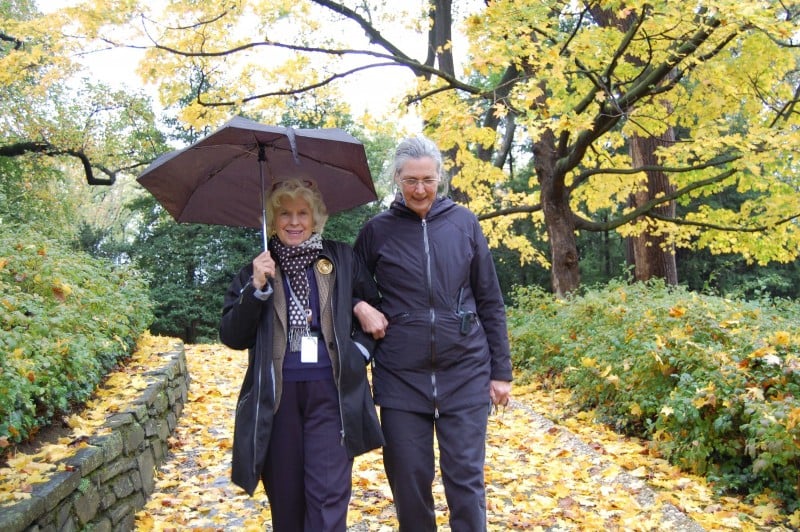
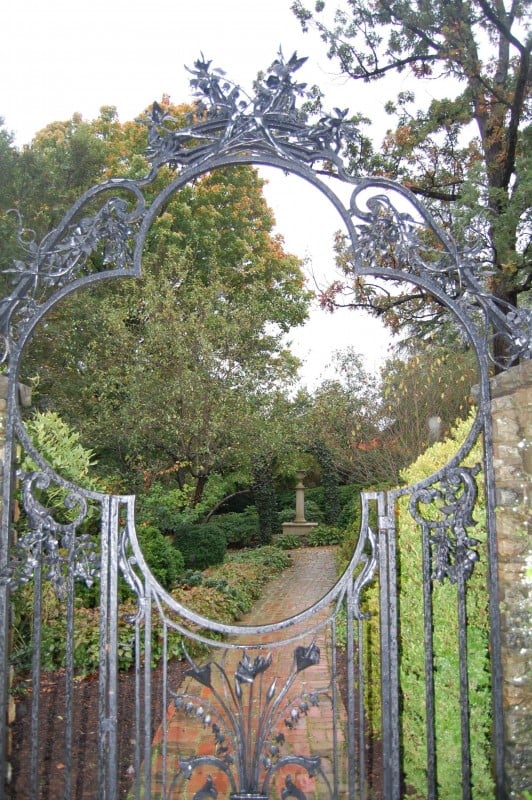
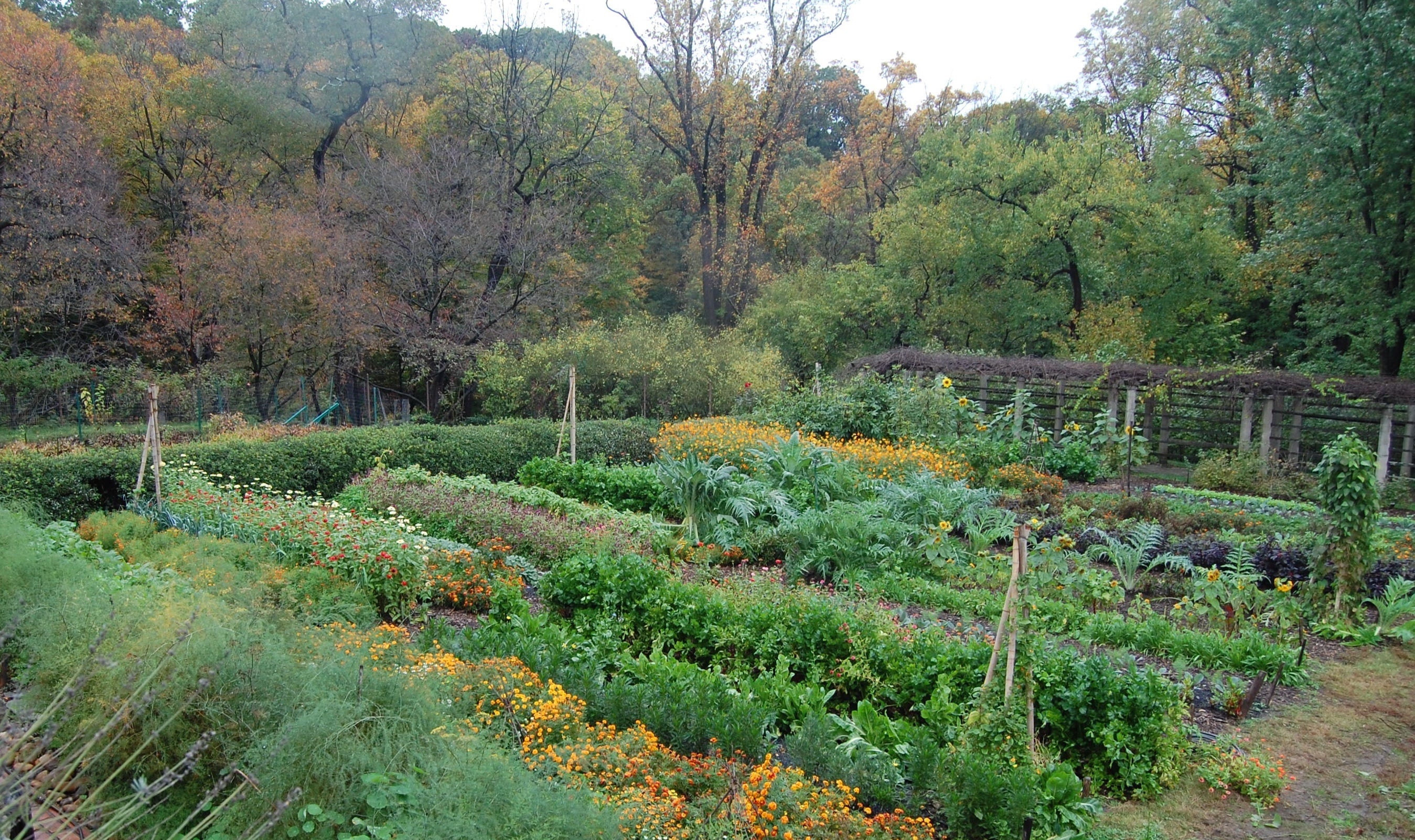
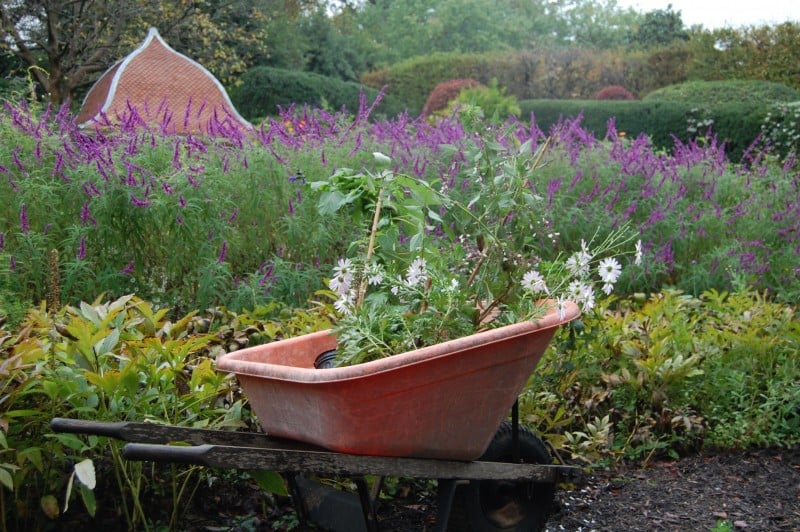
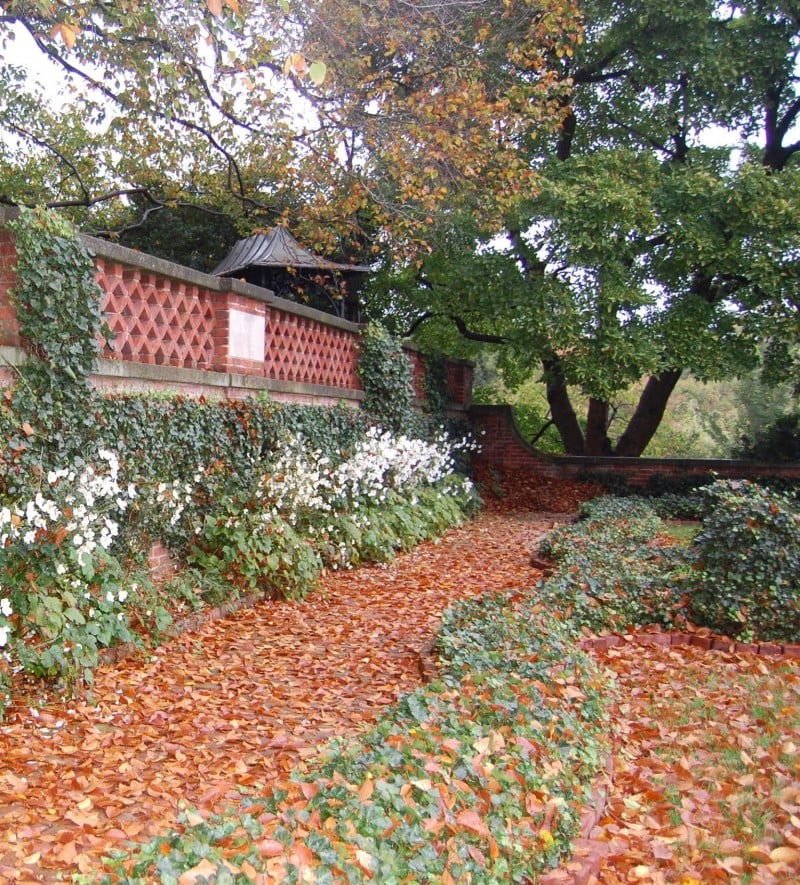
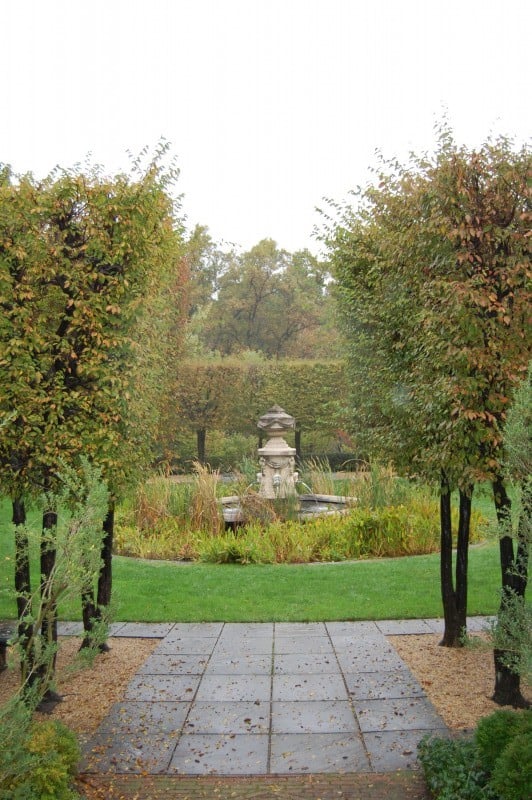
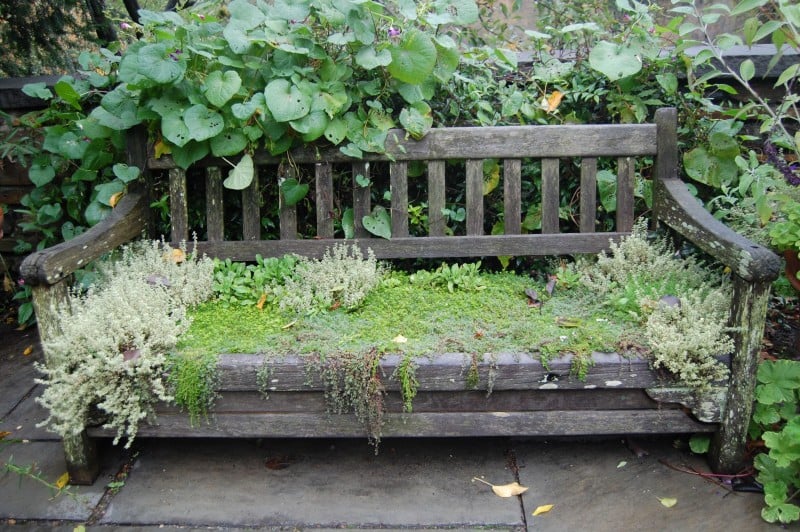
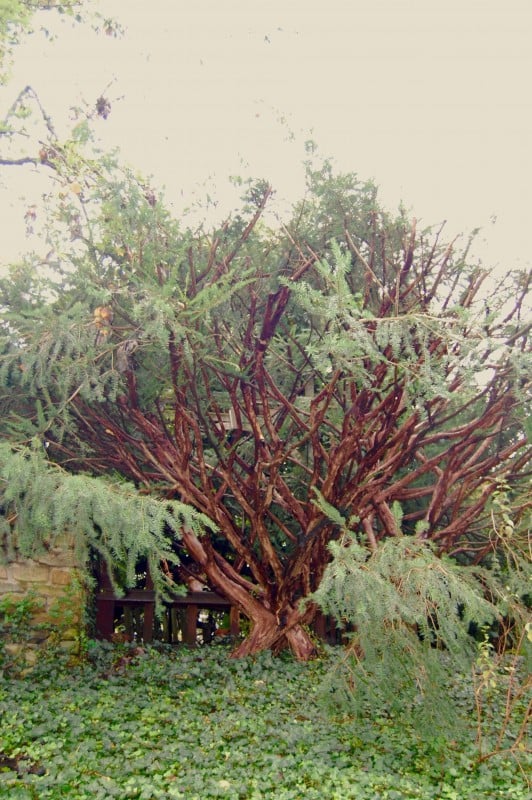
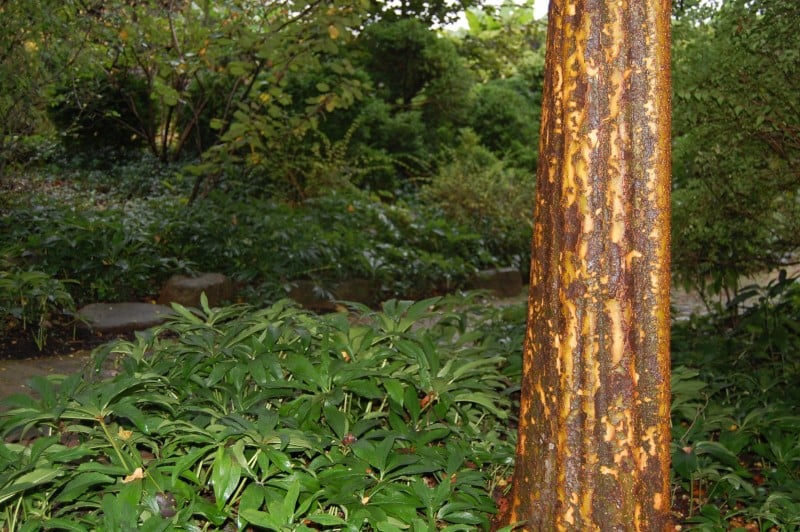
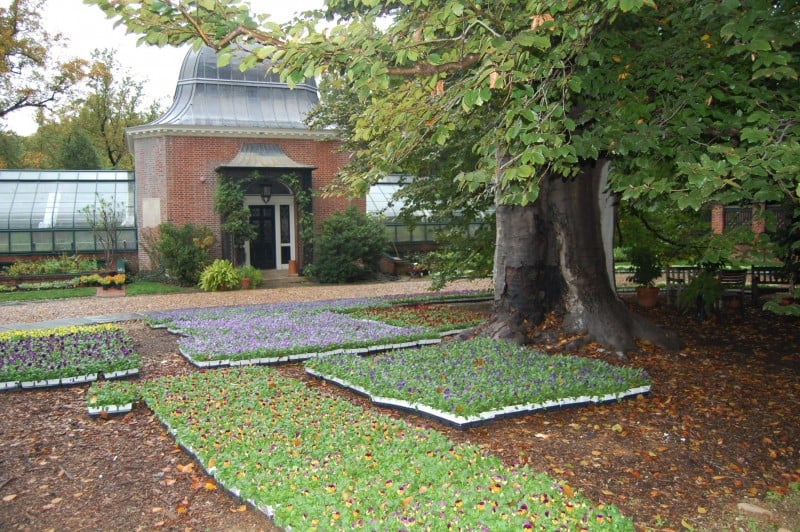
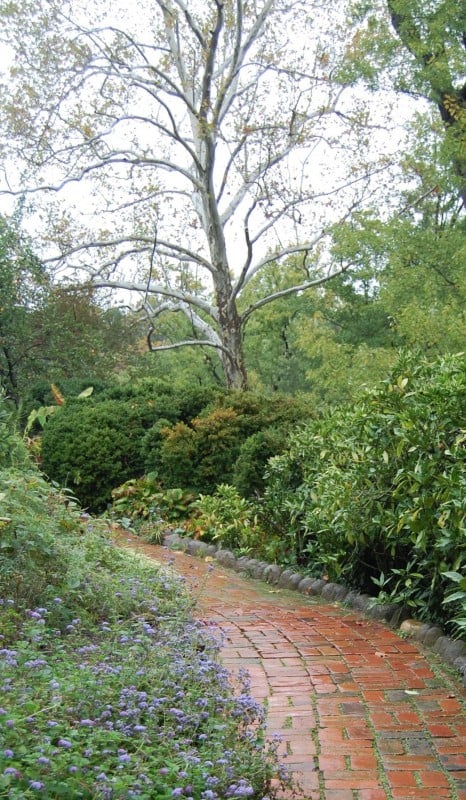
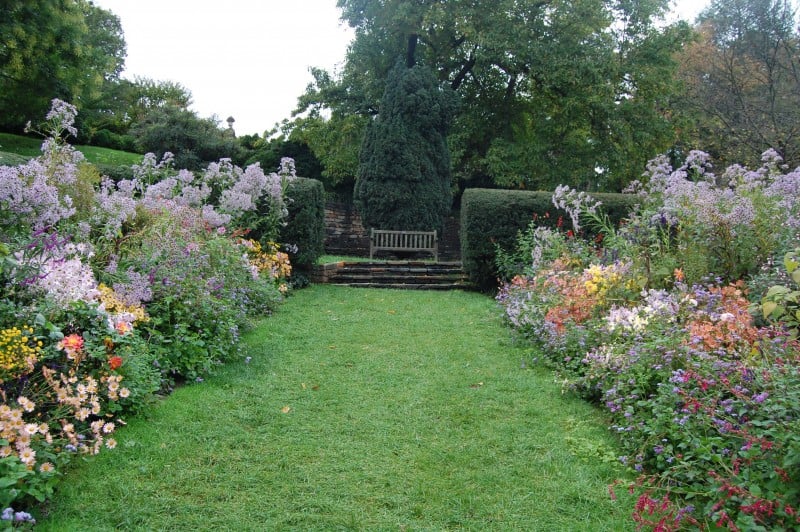
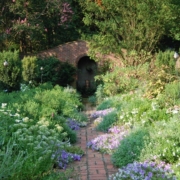
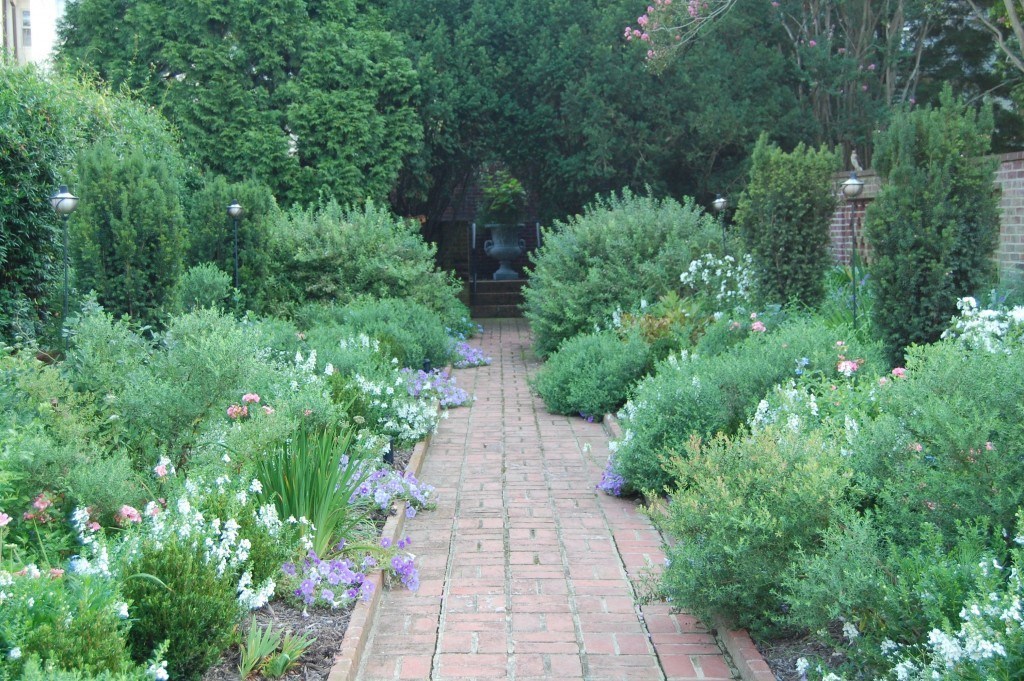
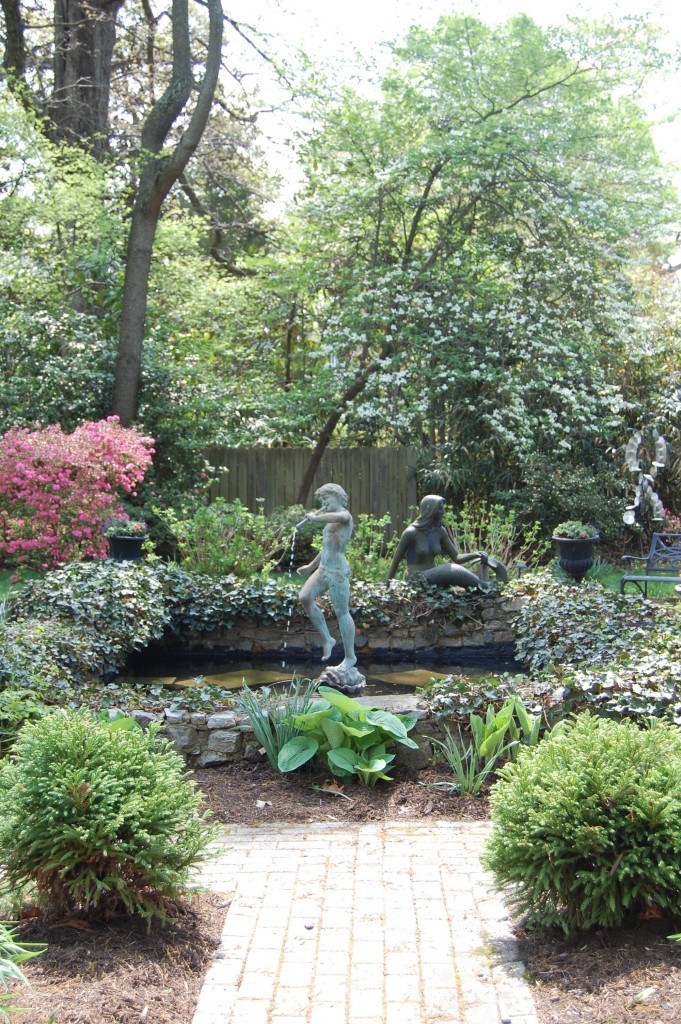
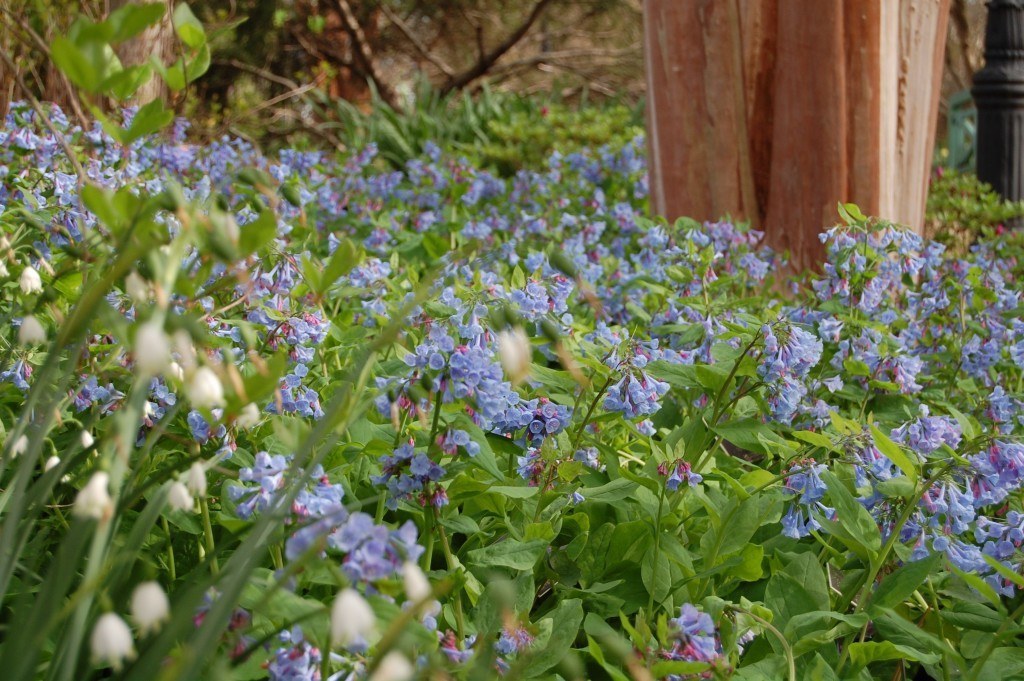
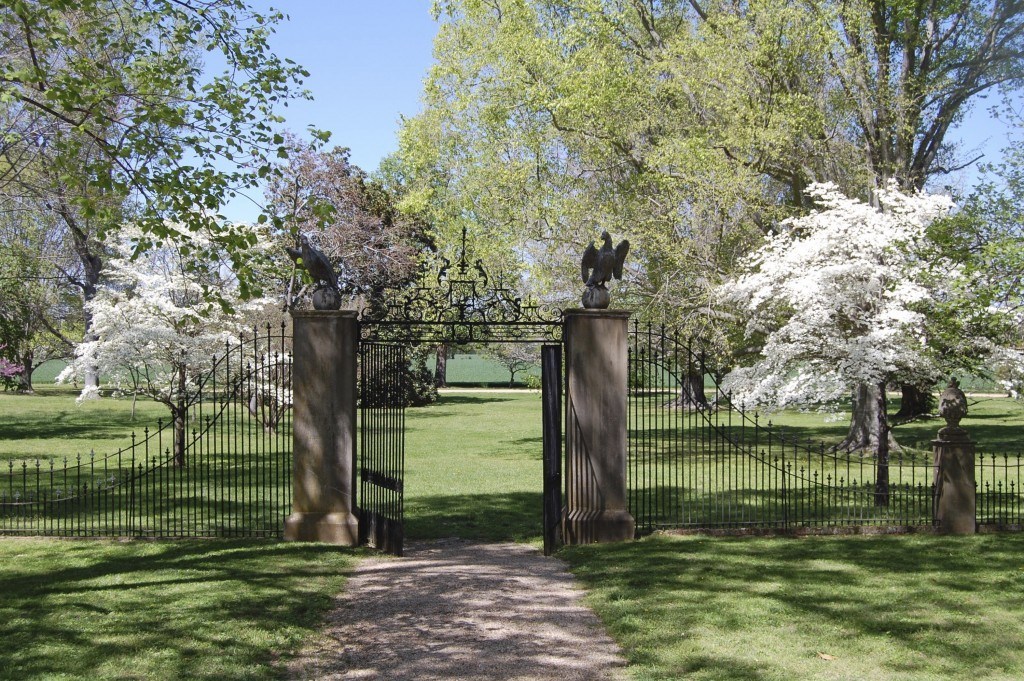
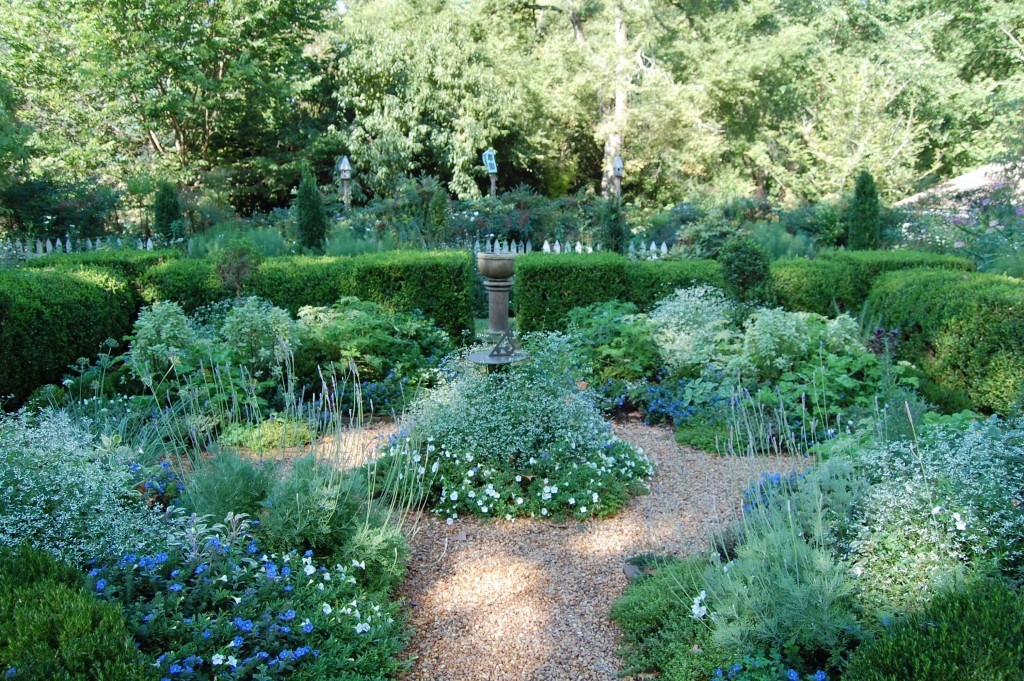 If you loved your drive east to Westover, turn around and head west to
If you loved your drive east to Westover, turn around and head west to 